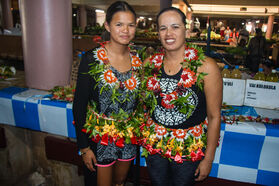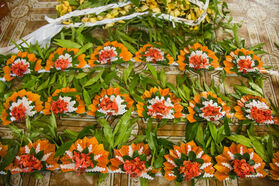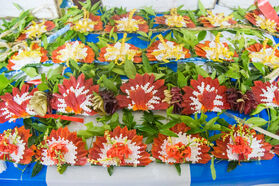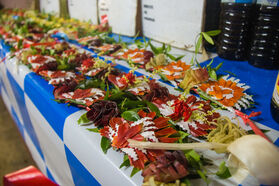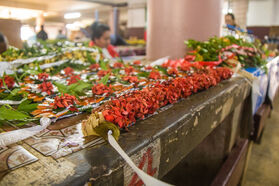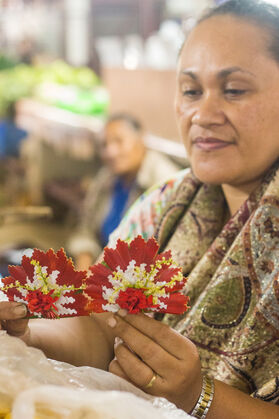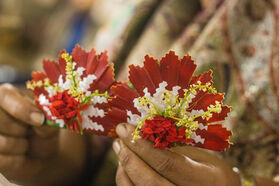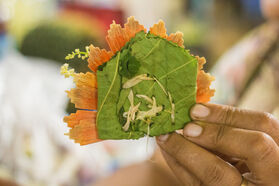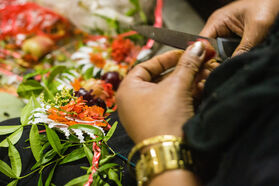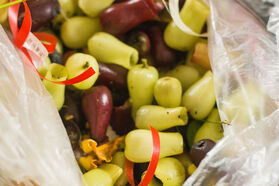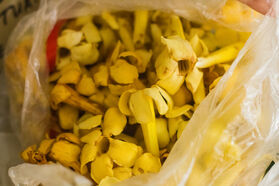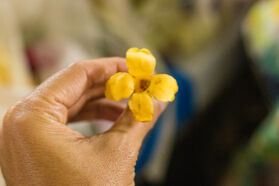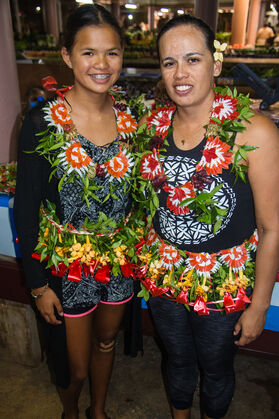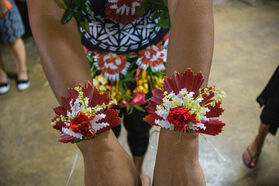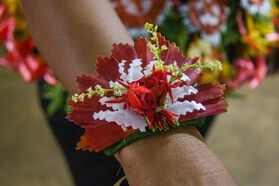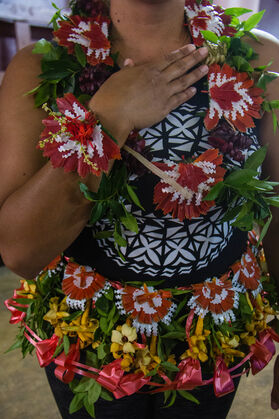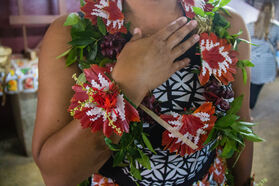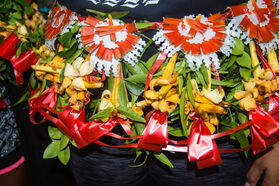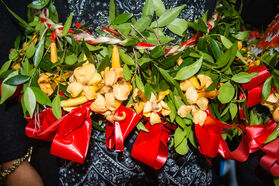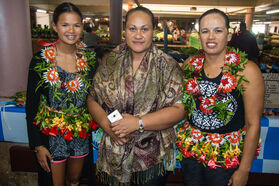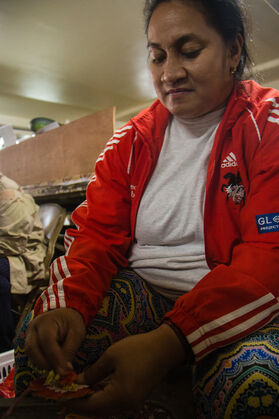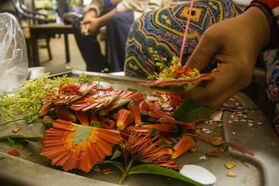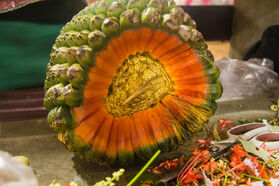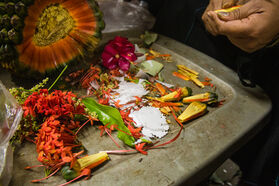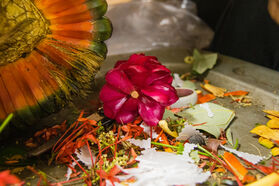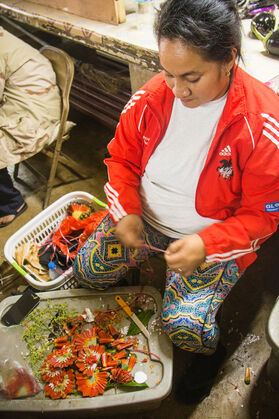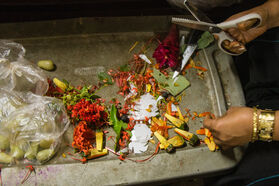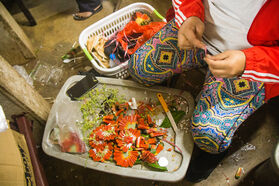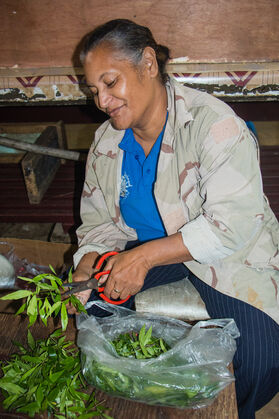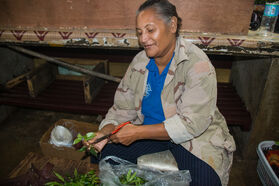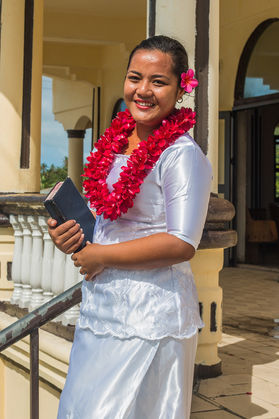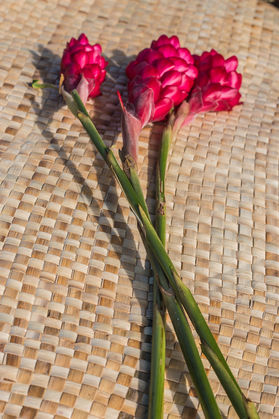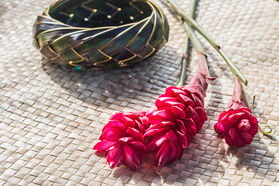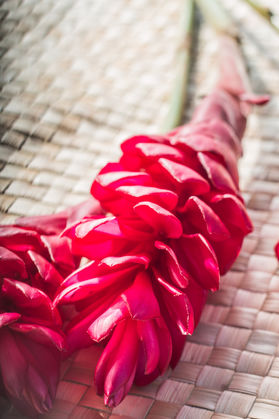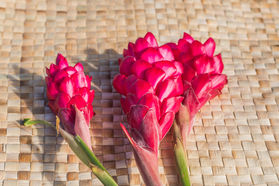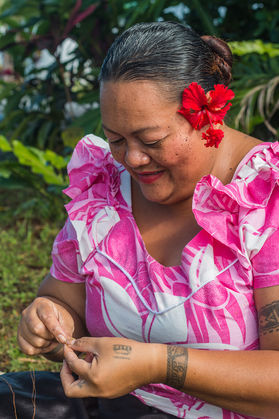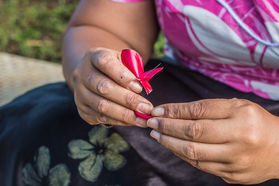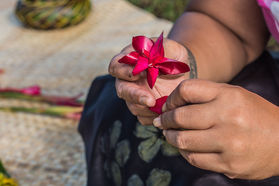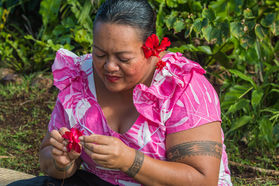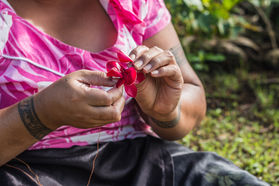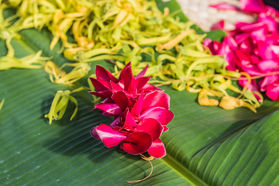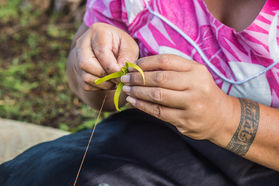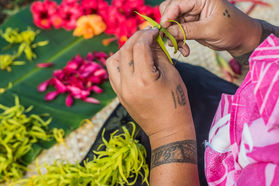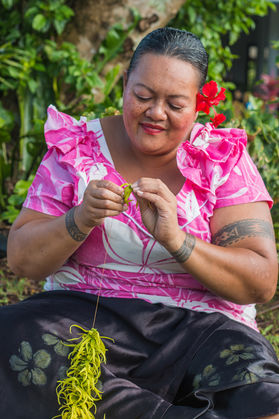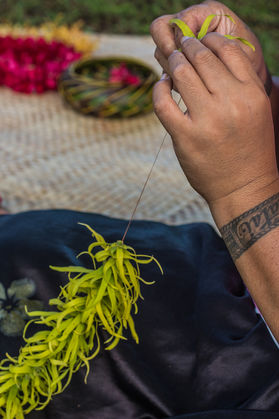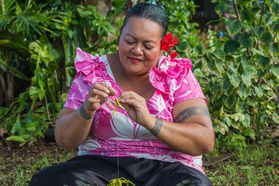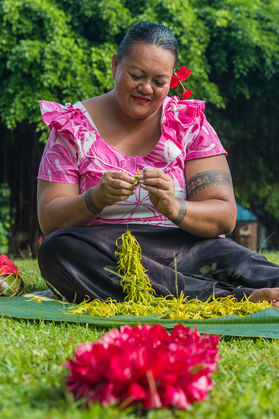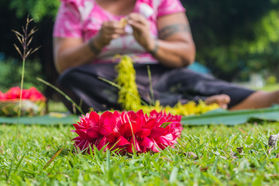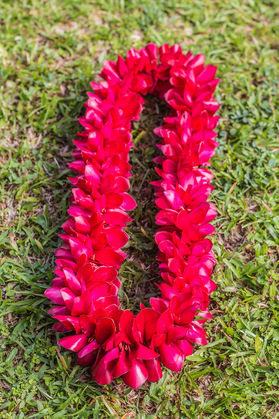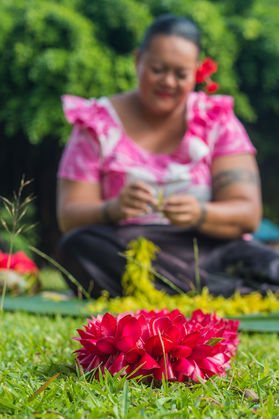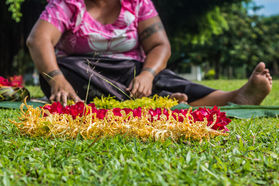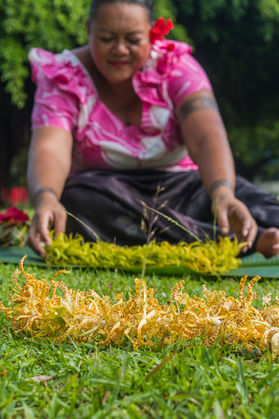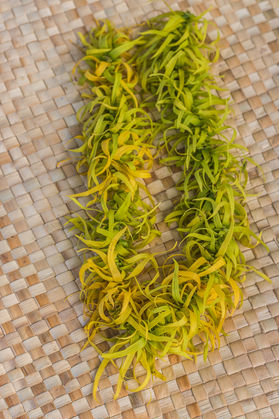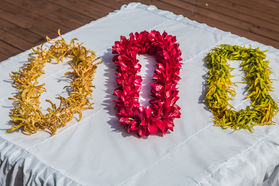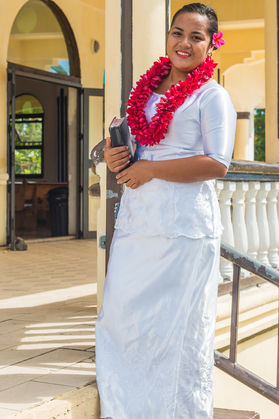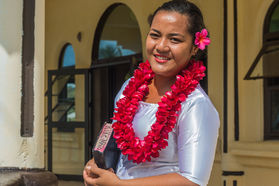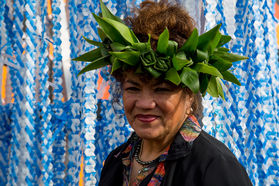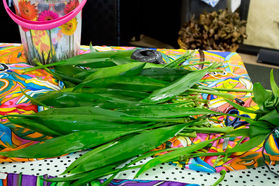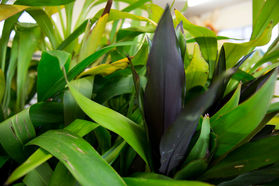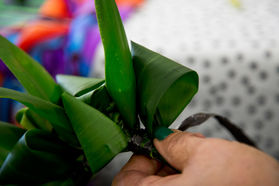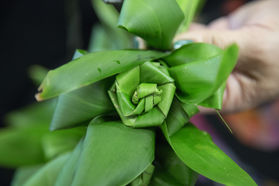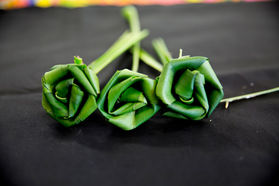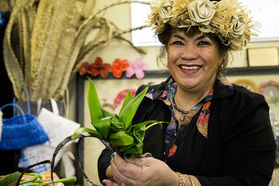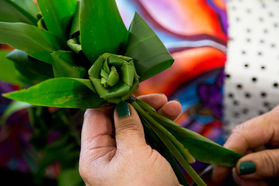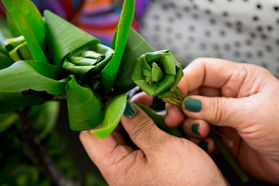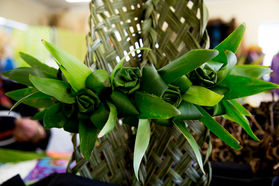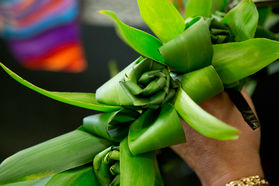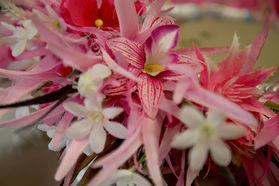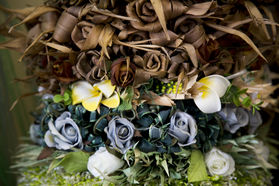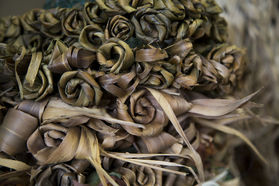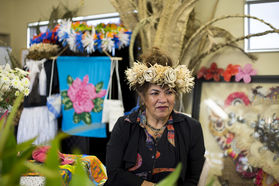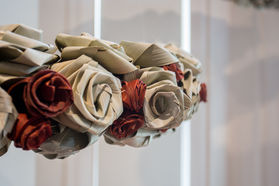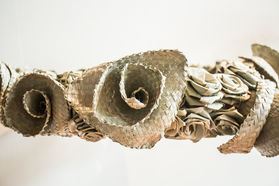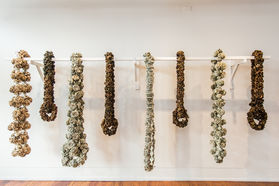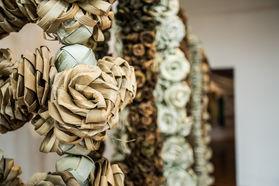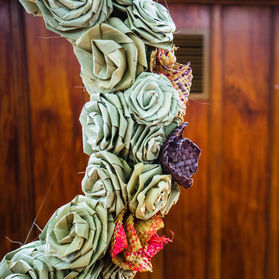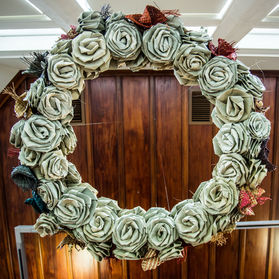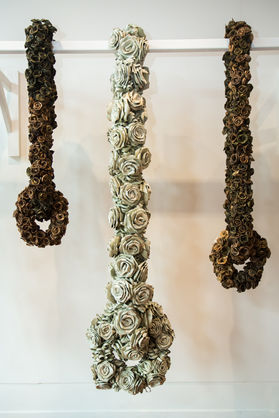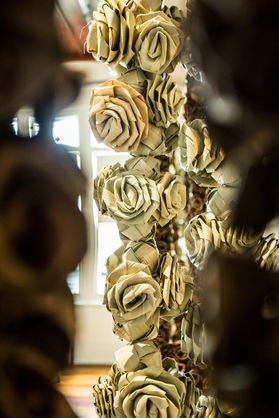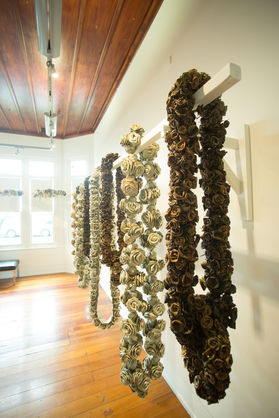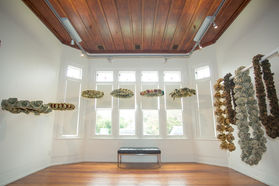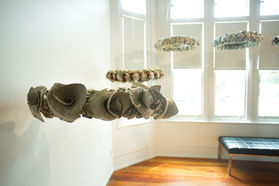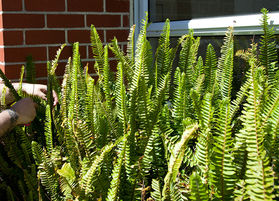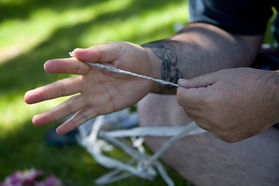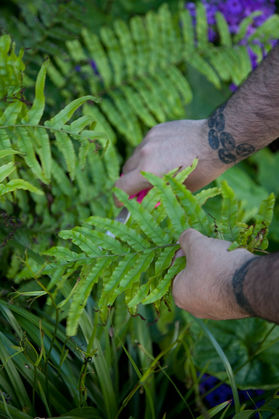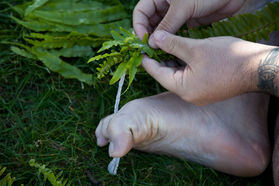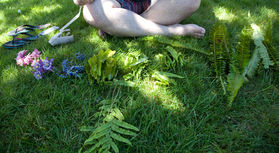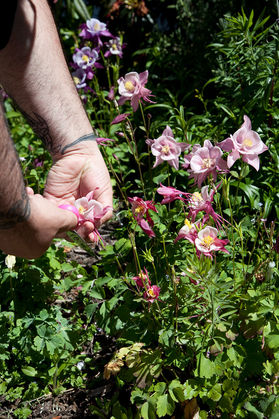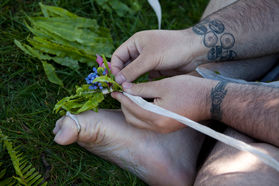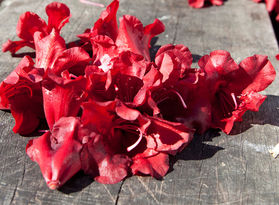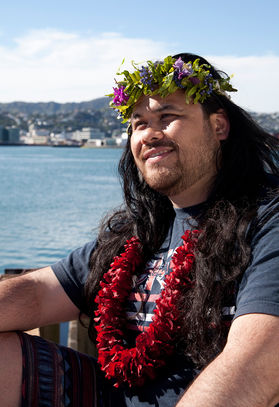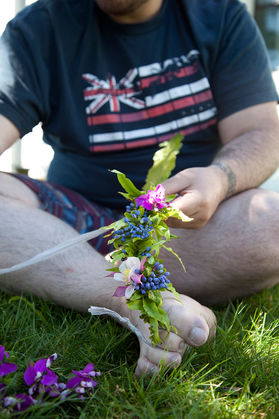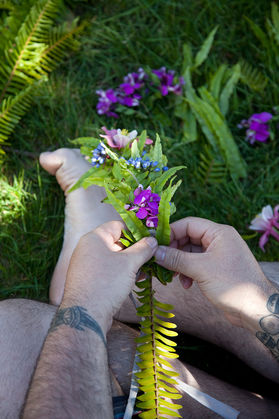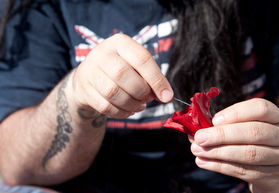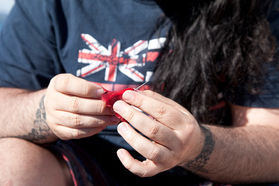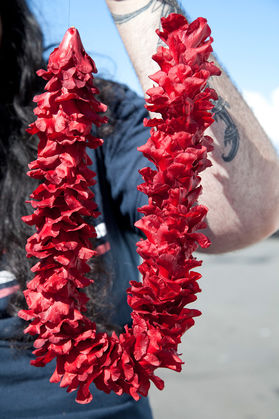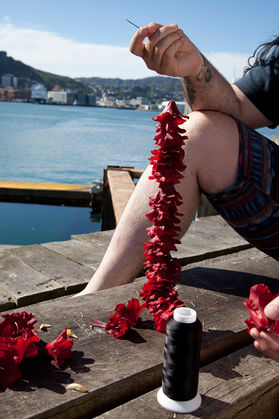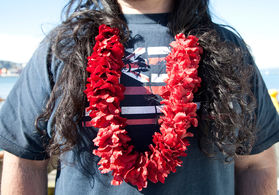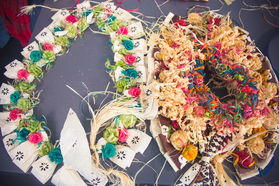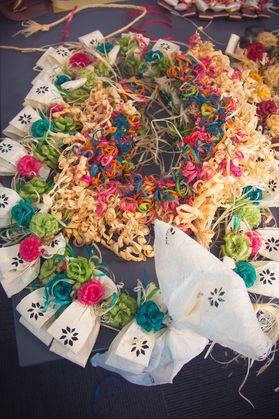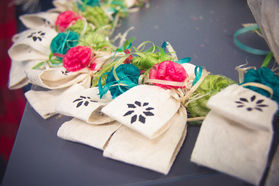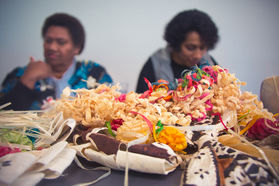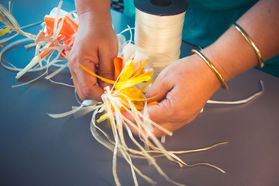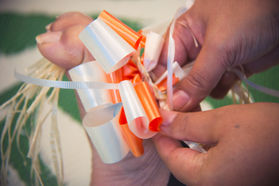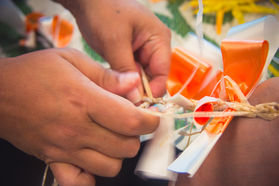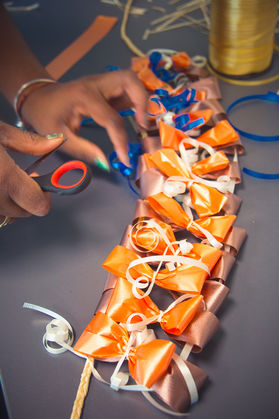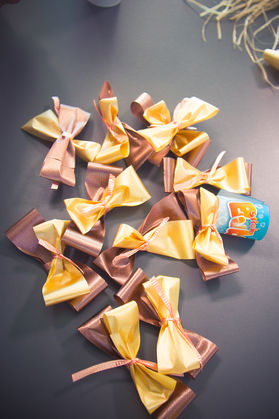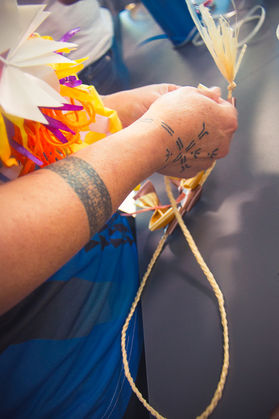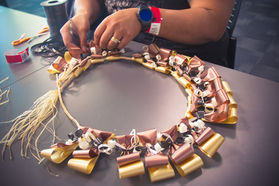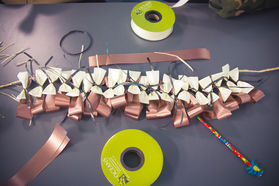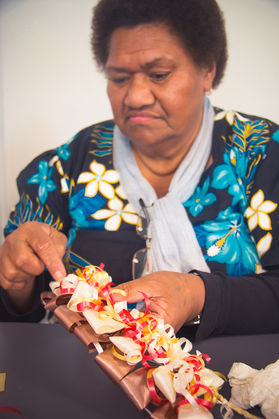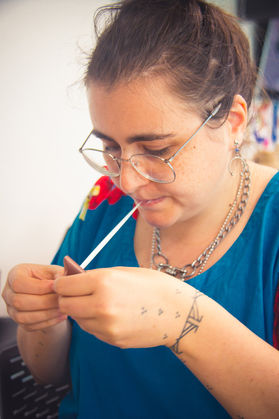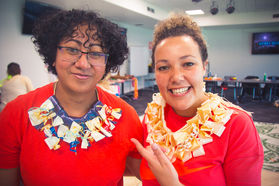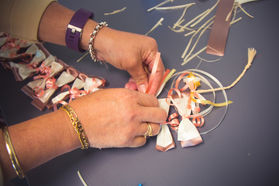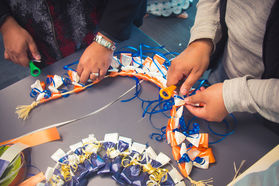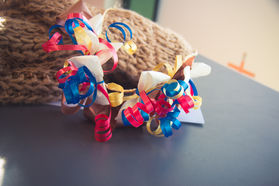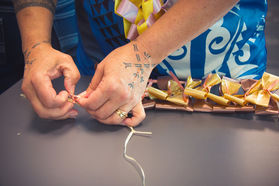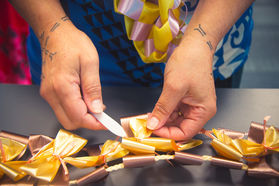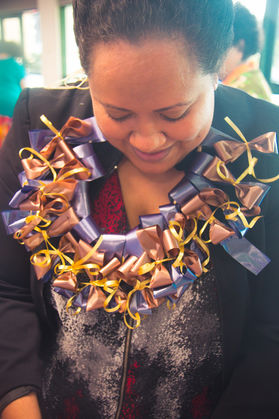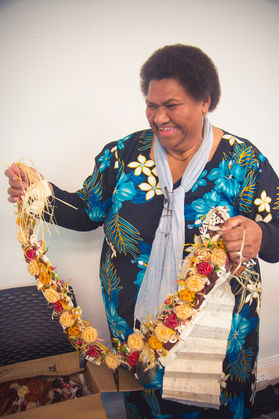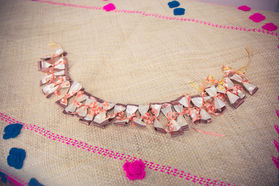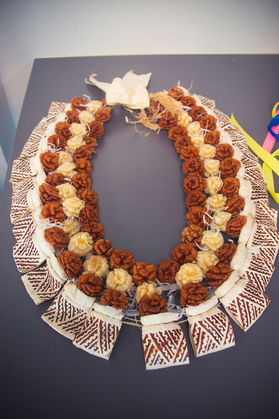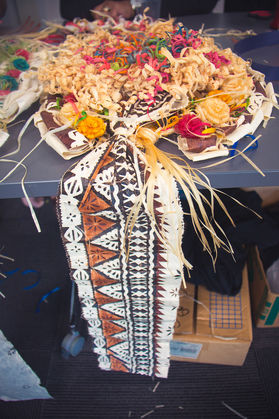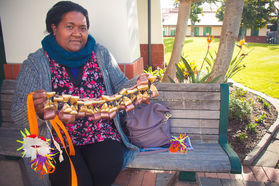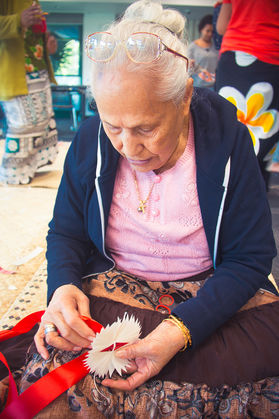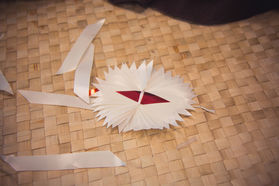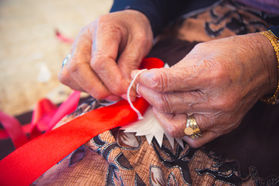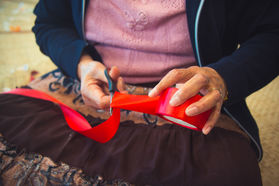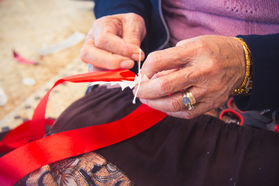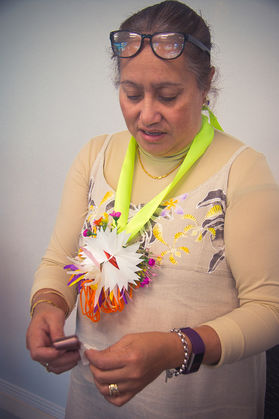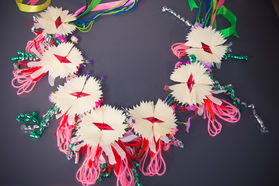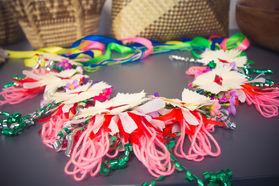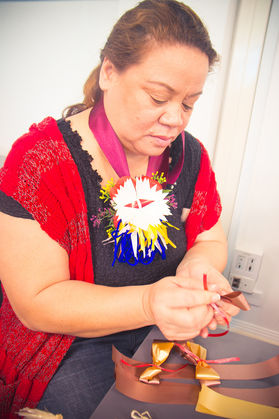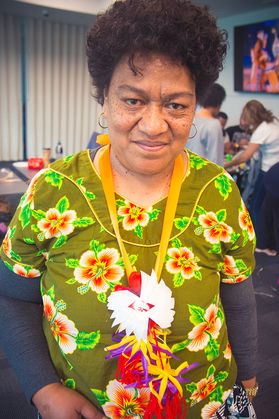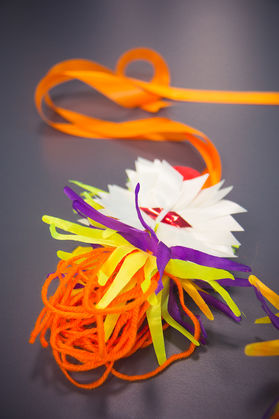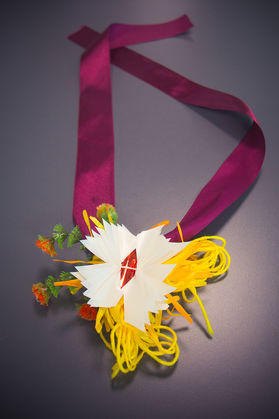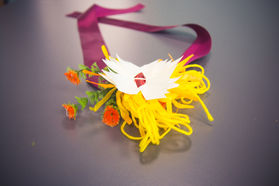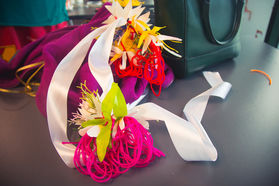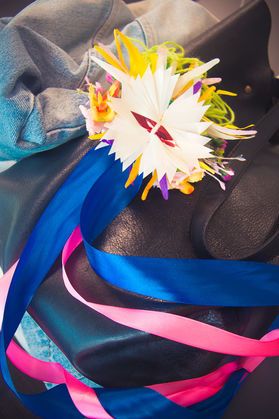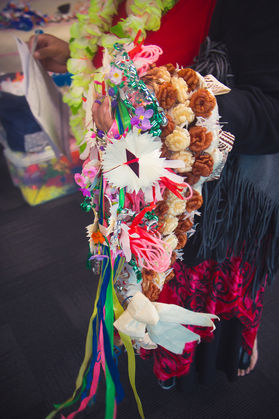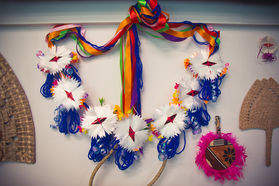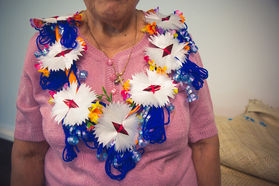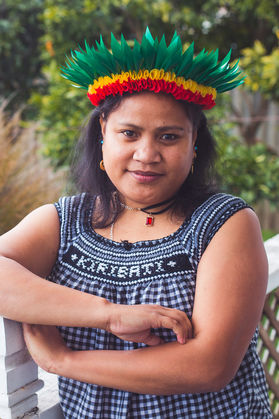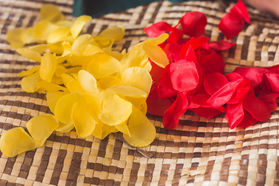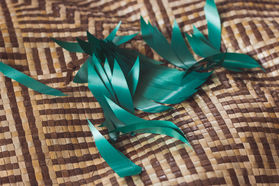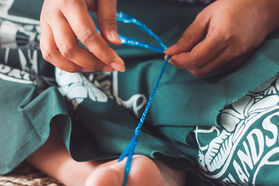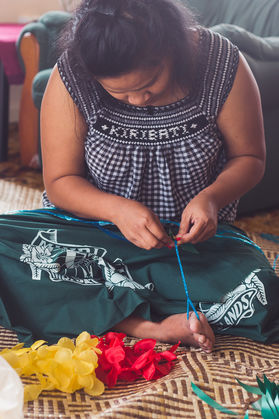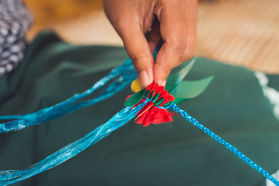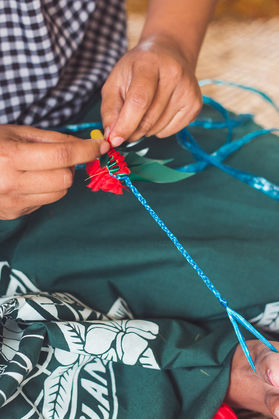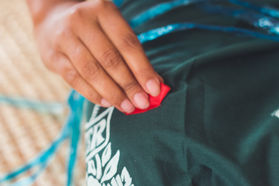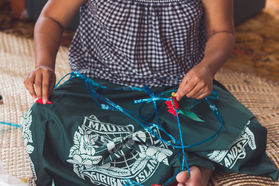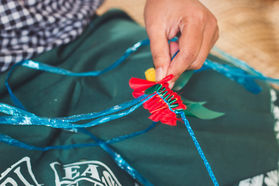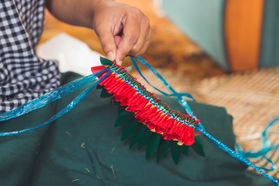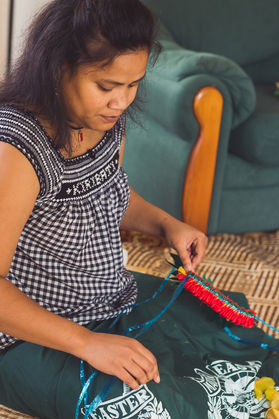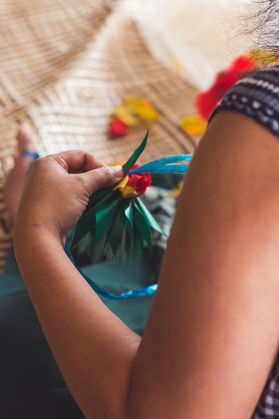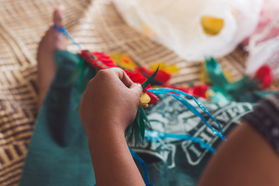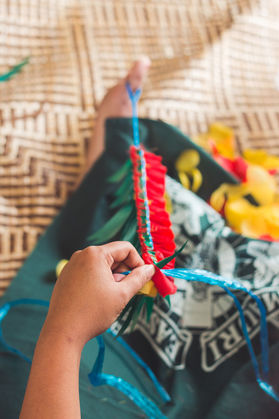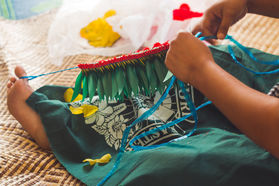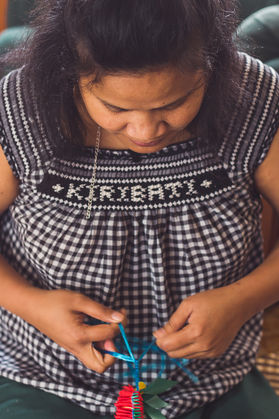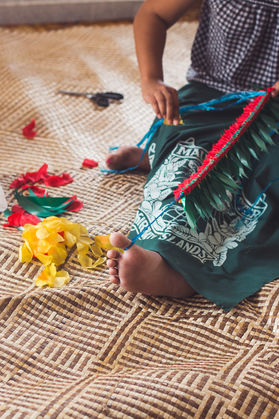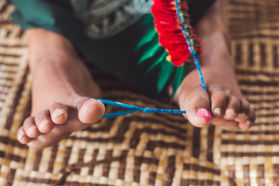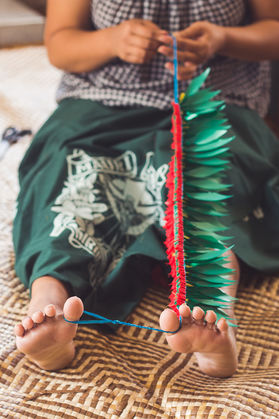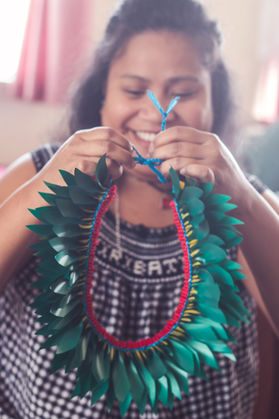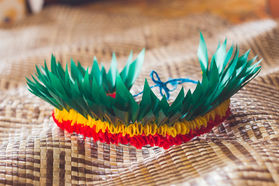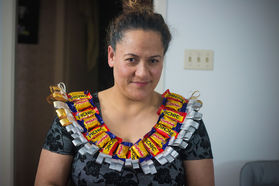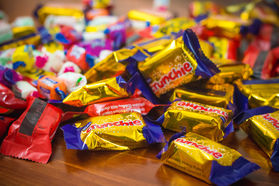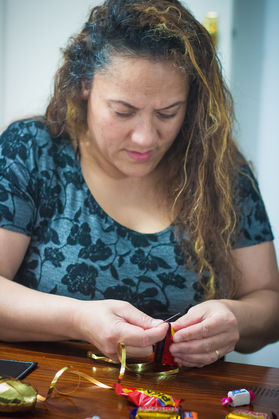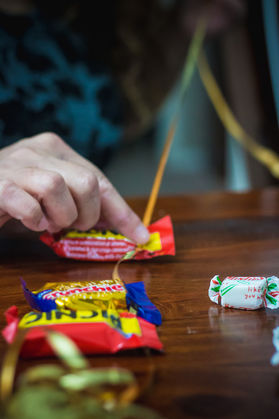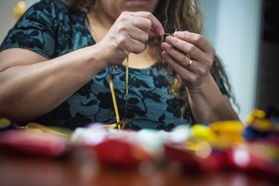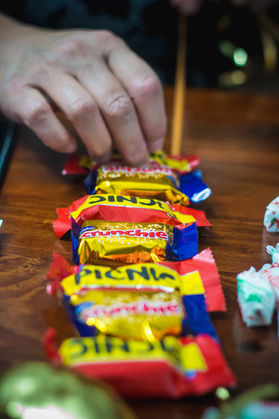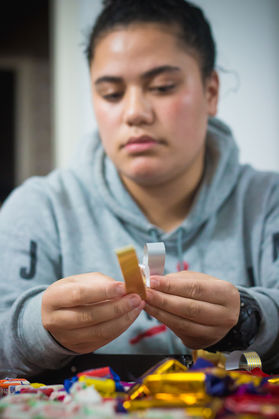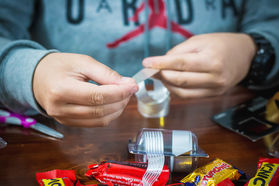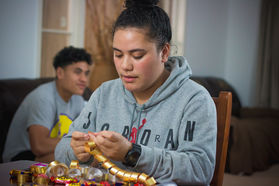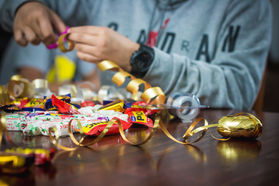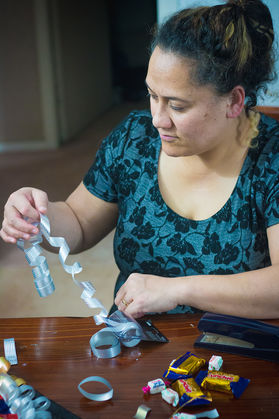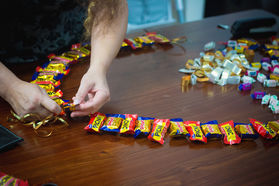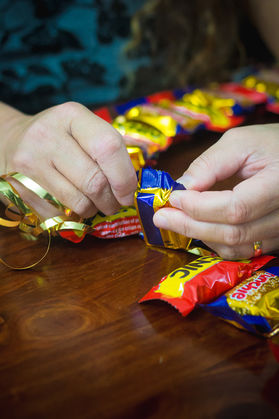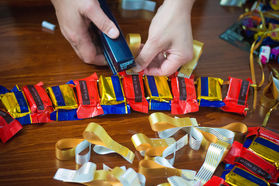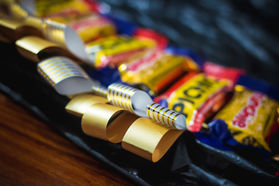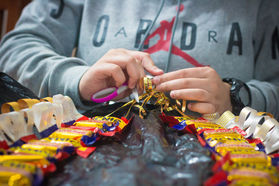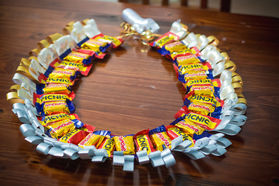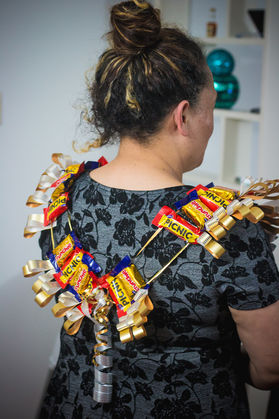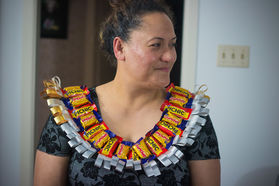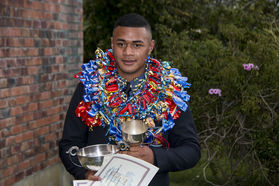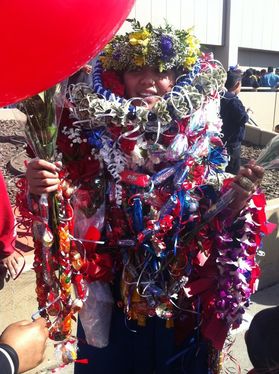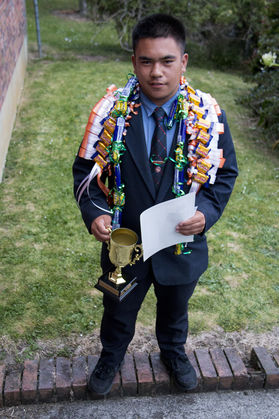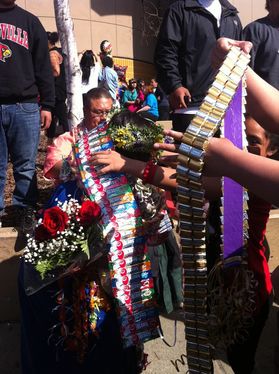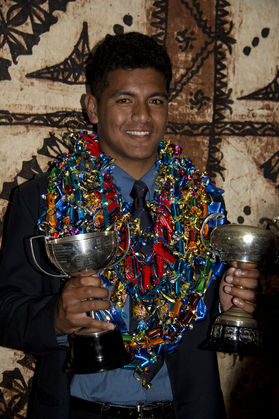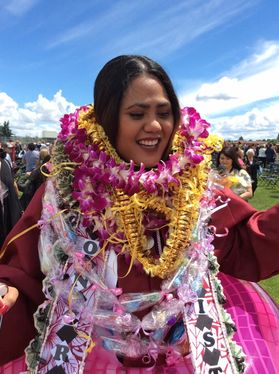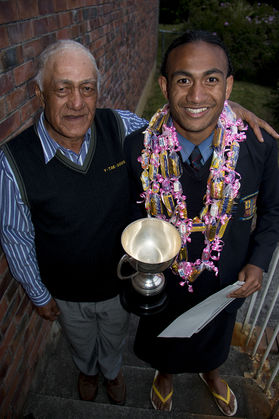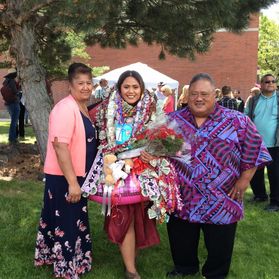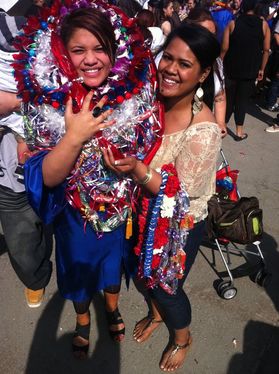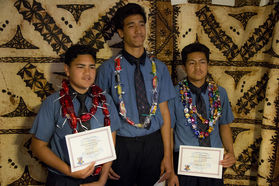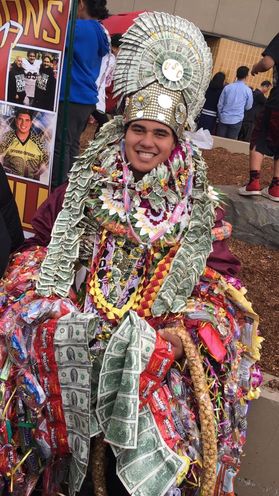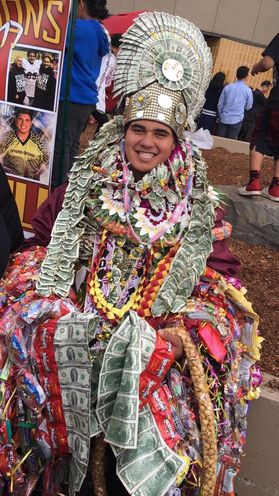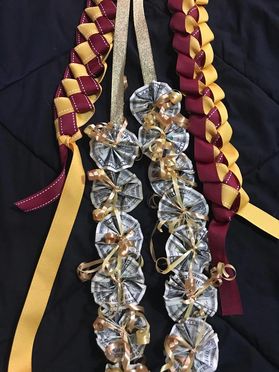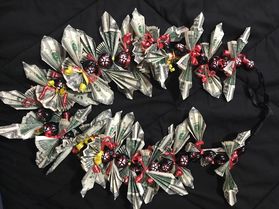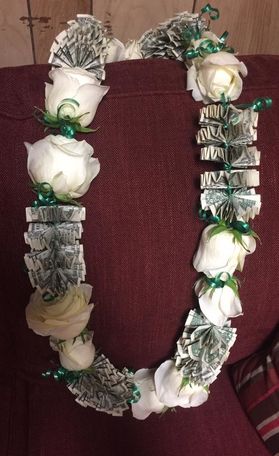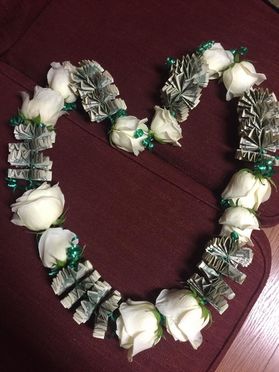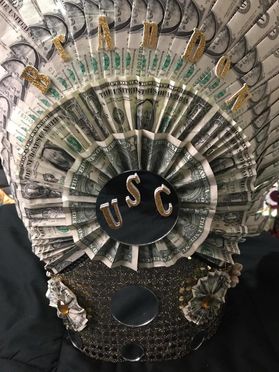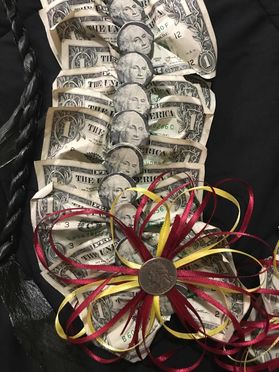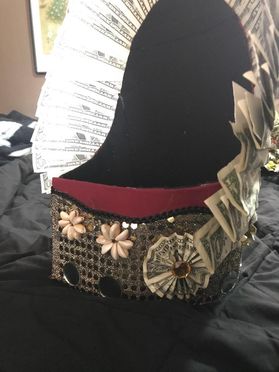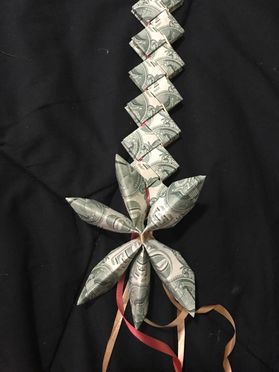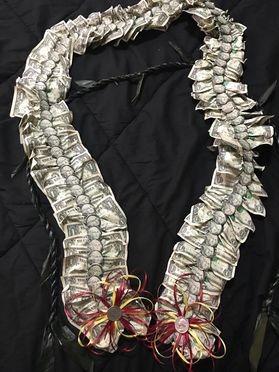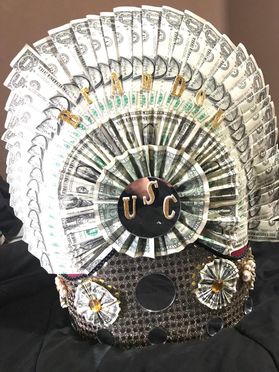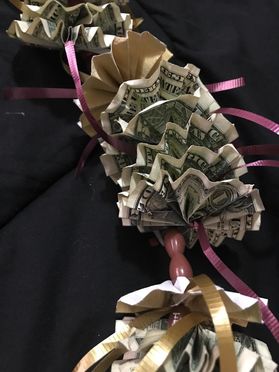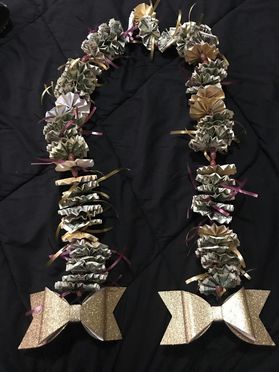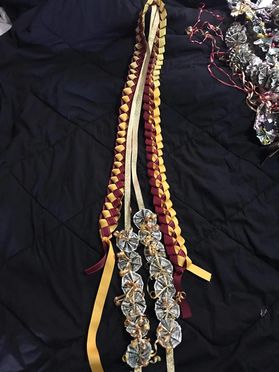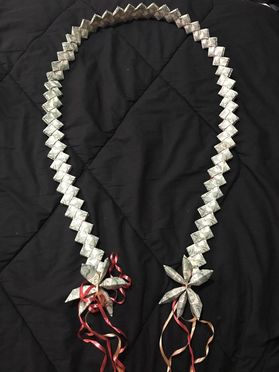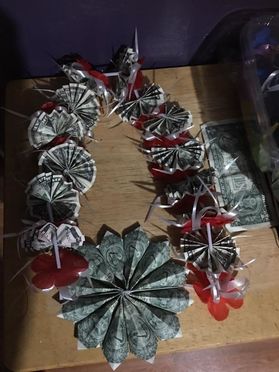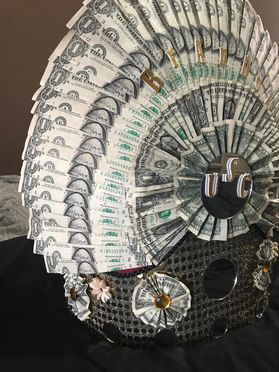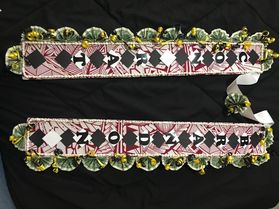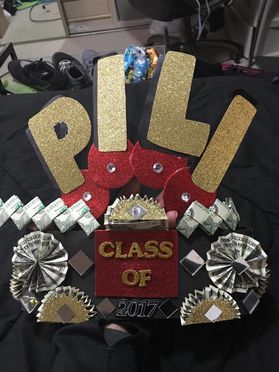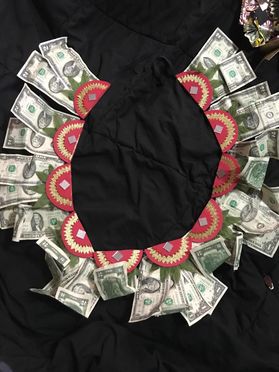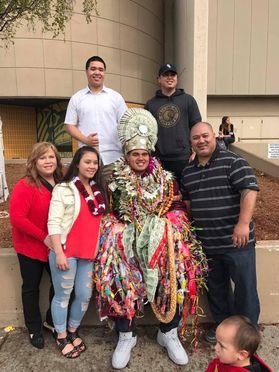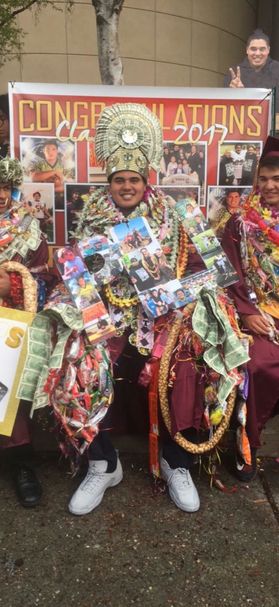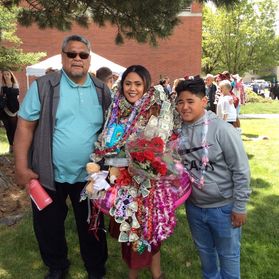MEASINA PASIFIKA - LEI CULTURE in the PACIFIC
Ane Tonga - Guest Curator
In the Pacific, neck garlands may be a symbol of welcome, but are so much more than that -ever present at Pacific gatherings as a sign of celebration, mana, mourning or beauty and always a bestowal of alofa and respect.
The ‘ula, ‘ei, kahoa, lei, salusalu show both the connections we have as people interlaced in culture across Pasifika, and also our differences with each Island having its own unique incarnations of these famous and most Pacific of adornments.
But beyond the postcard hula dolls and plastic tourist tat lies an astonishing history that is resonant with meaning and rich in cultural currency. Measina Pasifika looks back to a time when Pacific cultures prized shells over gold, teeth and greenstone for currency and hair and feathers as the ultimate of status symbols.
Relationships between the past and present are explored through Pacific taonga drawn from the collections of Te Papa Tongarewa and Auckland Museum. These taonga display the use of natural materials from Pasifika environments to communicate social and cultural messages of mana, status and aloha aina. From the lei niho palaoa of Hawaii to the batinivuaka of Fiji, these symbolically rich garlands offer tangible glimpses of how our ancestors adorned themselves and drew on the inherent life force of materials worn.
Featured in this exhibition are talented artists from across the region such as Mary Tupai Ama of the Cook Islands, Walter Kawikaka’iulani Aipa of Hawaii and Martha Tekky of I-Kiribati who showcase the making and wearing of neck garlands as an enduring cultural practice shared by diverse Pacific cultures. Like their ancestors before them, these artists are adapting to new materials to create new forms of ‘ei, lei and bibiri that continue to strengthen social ties and express unique assertions of cultural identity.
Measina Pasifika is the first online exhibition of its kind and kicks off The Coconet’s exciting new digital home for Pasifika photographers.
Ane Tonga is a practising artist, curator and writer based between Auckland and Wellington. Much of her artistic practise examines inter-subjective and collective experiences of place and cultural value.
Ane is a graduate of the University of Auckland and holds a Bachelor of Fine Arts with Honours and a Postgraduate Diploma in Museums and Cultural Heritage. She has exhibited in many national and international art institutions and undertaken curatorial roles at Wellington’s City Gallery, Dowse Art Museum, Te Papa Tongarewa Museum of New Zealand, and the Dunedin Public Art Gallery.
Currently, she is the Lead Exhibition Curator at Rotorua Museum Te Whare Taonga o Te Arawa.
Made with Funding by Creative NZ
Scroll down and click on the Menu Bars below to go to different islands.
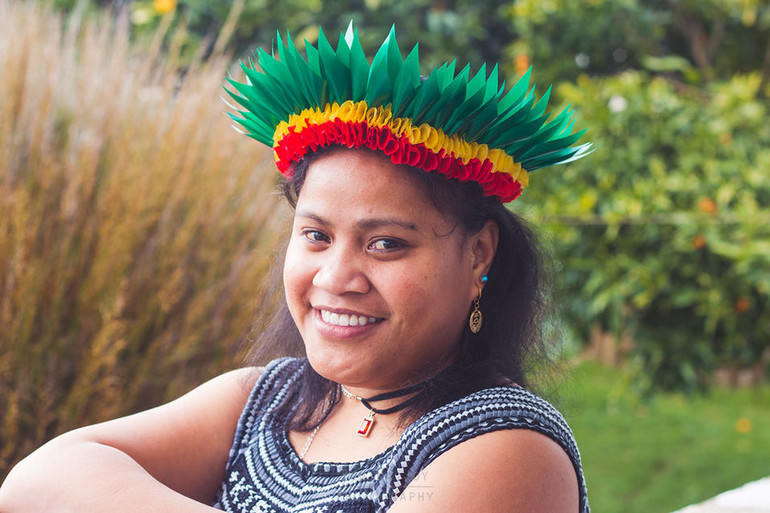
-
All
-
TONGA
Artist Profile: Talamahu Market Kahoa Makers
"The kahoa here in Tonga smell better because we use real flowers, not plastic flowers. We also use better flowers. There are certain flowers that are found elsewhere, and in terms of how it’s made, it’s always about if you can get the best flowers.
Some flowers are harder to find than others like the Heilala flower.
We wear the Kahoa around the neck or waist & even around the wrist. We make different ones for the wrist and ankles, even for the hair."
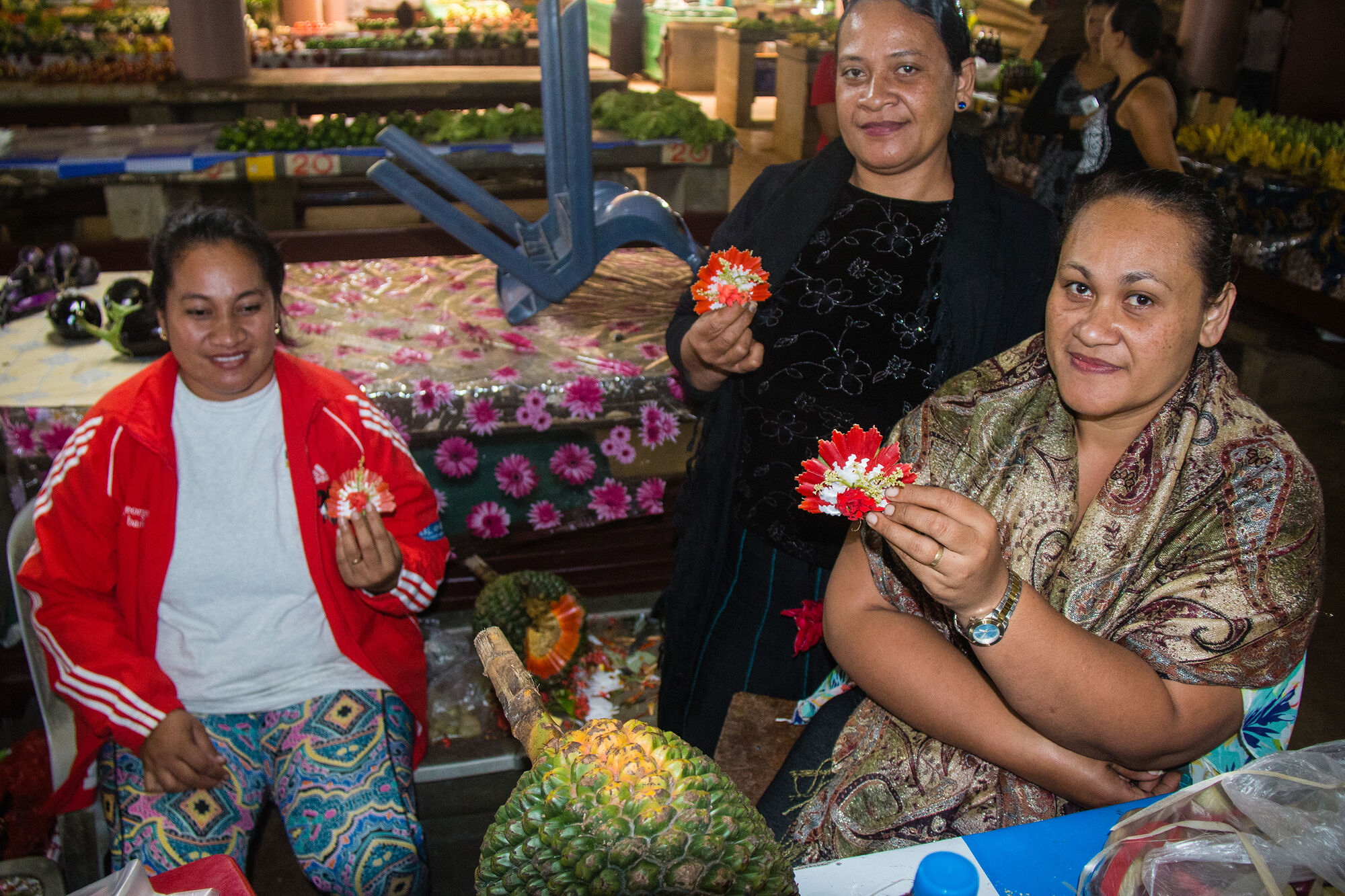
Kahoa (necklaces) are made in the Kingdom of Tonga for a variety of occasions and often as part of elaborate teunga tau’olunga (dance costumes). Inherent in the kahoa (necklaces) are values relating to anga fakatonga, or, the Tongan way of life based on values such as ‘ofa (love) and generosity.
Making kahoa are imbued with cultural tradition and knowledge. Making kahoa kakala, fresh flower necklaces, involves a process of collecting flowers known as toli kakala which means to search, select and pick from over 50 varieties of fragrant plants known as akau kakala. The collected materials are gathered and given to the kau tui kakala or the people that weave and put the garland together. The kau tui kakala holds in-depth knowledge of making and the symbolic meanings of kahoa kakala. These kahoa are then gifted and presented to a special guest as a sign of ‘ofa and faka’apa’apa (respect). Kahoa kakala can be worn purely as decoration, as part of teunga taolunga.
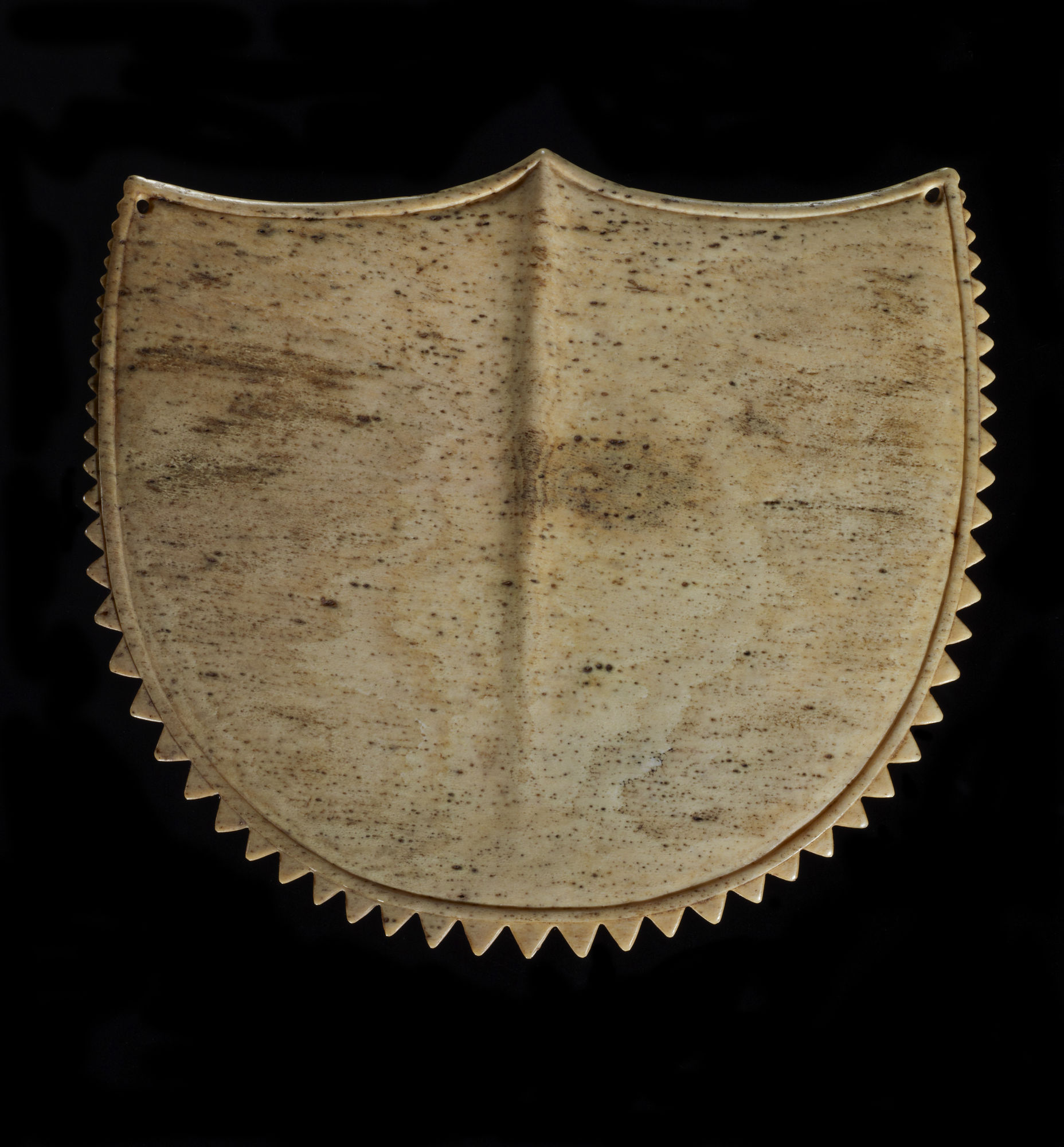
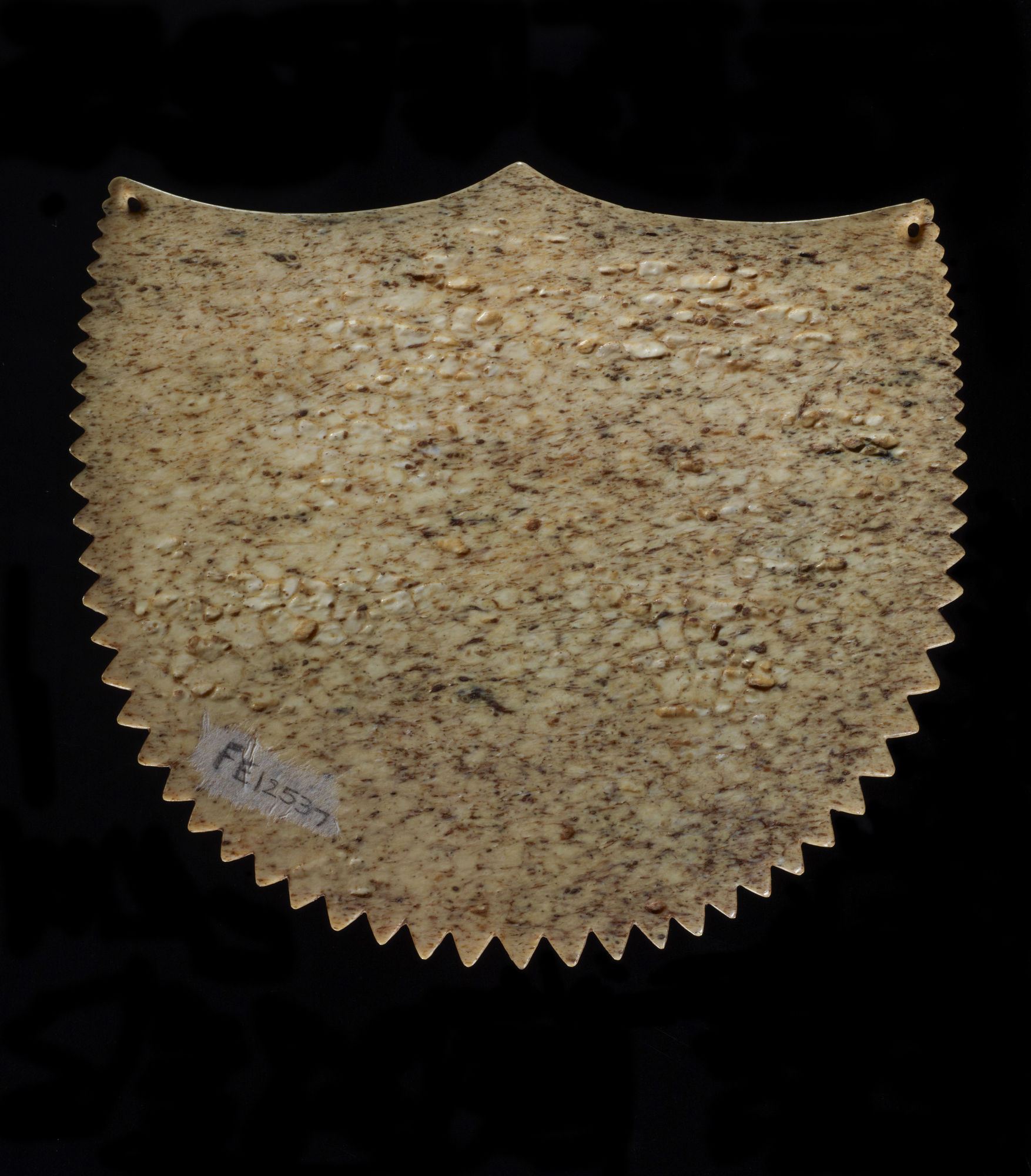
Whalebone Chest ornament, 1700s, Tonga, maker unknown. Purchased 2010 CC BY-NC-ND 4.0 Te Papa
.
LEI as PROTECTION
Not all lei were made and worn to celebration or as decoration. Some were made to protect the body, like this whalebone chest ornament from the 1700s, and allows us to imagine how our ancestors adorned themselves before battle.
This chest ornament is an extremely rare symbol of status that has been fashioned from one piece of ivory. As a result of warfare with Fiji during the 1700s, Tongan warriors crafted whalebone chest ornaments as a form of armour to repel Fijian weapons.
Adornments made from whalebone immediately connect Fiji, Tonga and even Samoa as it was a material that was highly valued and traded between islands. From the late 18th century, Fijian chiefs adopted a similar object of prestige made from ivory and pearl shell called Civavonovono and Civatabua.
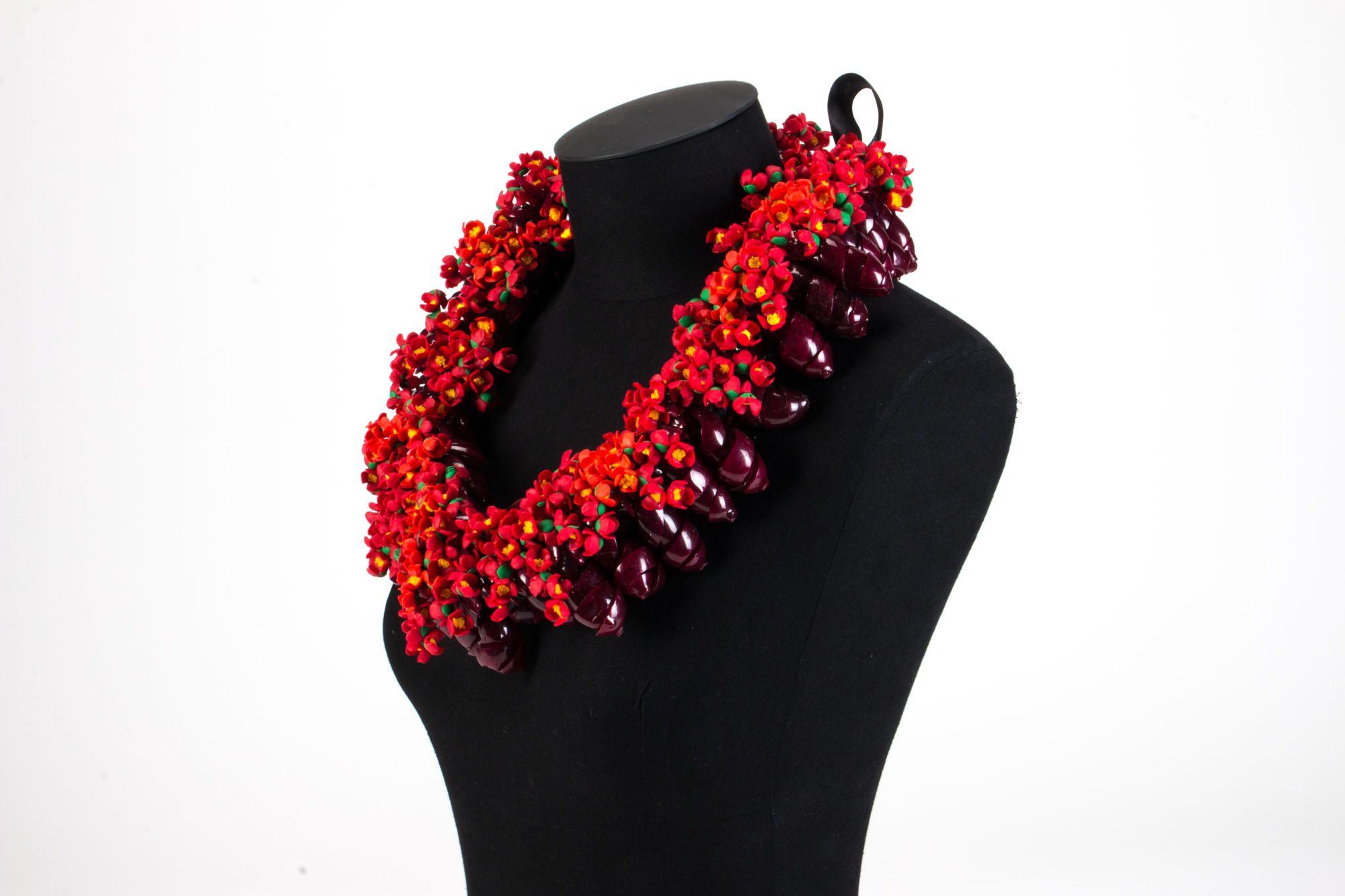
Heilala, 2015. Auckland Museum Tamaki Paenga Hira. (2015.32.1)
KAHOA KAKALA
In Tonga, flowers are ranked in accordance to cultural significance and the highest ranking of all Tongan kakala is heilala (Garcinia sessilis). Heilala are believed to have originated from pulotu (the underworld) and is the national flower of Tonga.
One of the most unique transformations of kahoa is reflected in the work of Sulieti Fieme’a Burrows (above). In Kahoa Heilala, Sulieti draws on the sweet smelling flowers of the heilala tree to create a new type of kahoa heilala. She has cleverly substituted heilala with synthetic flowers that imitate the small red flowers of the heilala, Underneath the layer of flowers is a layer of spirals that have been ingeniously created from cutting plastic grapes. Bound together with nylon, ribbon and cooking clay, this work showcases the ways in which materials are repurposed to create new and innovative kahoa.
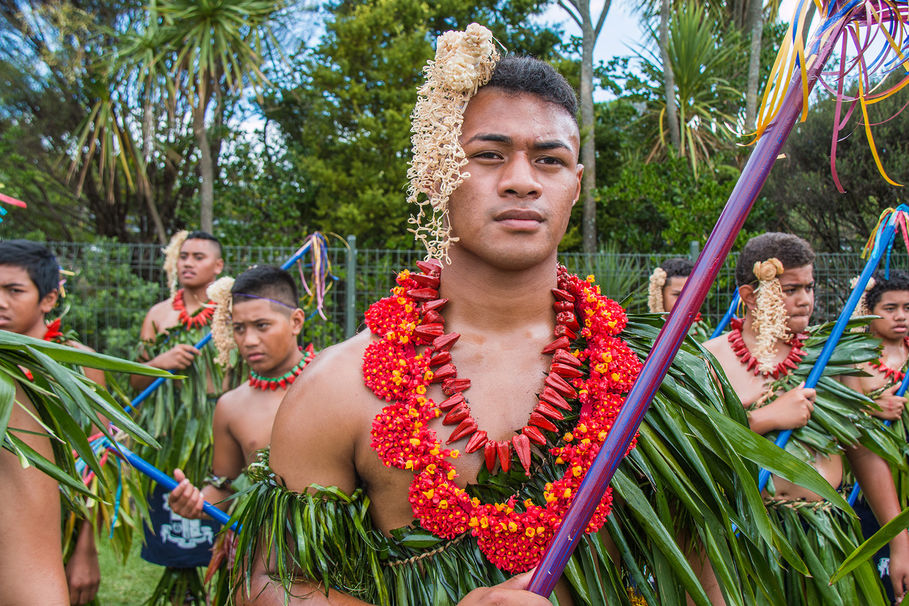
Kahoa are made in the Kingdom of Tonga for a variety of celebratory occasions and often as part of elaborate teunga tau’olunga (dance costumes). Women have raised the quality of teunga tau’olounga worn during faiva (performance) through design and innovative use of materials. It is not uncommon to see kahoa manifest into other accouterments that are worn on the body. For instance, materials and design used to form the kahoa are complimented through identical articles of adornment such as vesa (hand/feet pieces) and sisi (scented flower girdle).
Kahoa can be made in the home but you can also find talented artists in the markets of Tonga making an array of beautiful adornments including kahoa, ngatu (tapa cloth) and i (fans). These talented women use different kakala (plants) such as paongo (pandanus fruit) maile, uhi leaves (Eodia hortensis) mixed with unconventional materials like white paper and synthetic grapes to make elaborate accouterments of a teunga taolunga.
Photography of Kahoa makers in Tonga Markets: Penina Momoiseā
-
SAMOA
ARTIST PROFILE: OLIVIA FANO
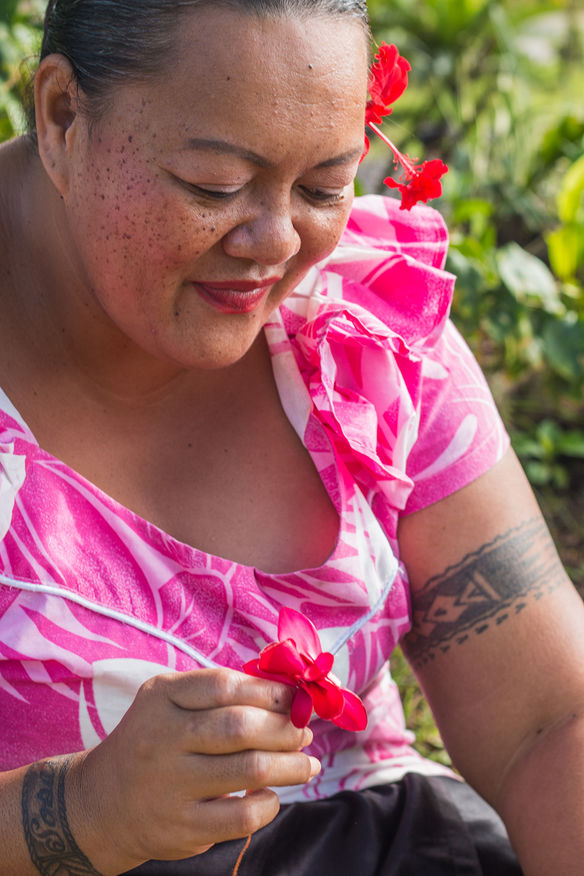
"The Teuila lei symbolizes our culture. I guess every island has their own state flower. For me, I grew up in Hawai’i and there are several islands in Hawai’i and each one has their own flower. So in Samoa, the Teuila represents our island and that’s what makes it unique.
Teuila is the state flower for Samoa. The Samoan people have used the Teuila for many years, so it’s common and it’s known for the Samoan island. If you come to Samoa, or if you see a Teuila lei you can recognize that it’s from Samoa."
Olivia Fano is an ula maker based in Savaii. From the village of Leauva'a in Upolu, Olivia learned to make ‘ula from her grandmother and fondly recalls watching her string them together as a young child.
She is skilled in making lei from a variety of plants but particularly enjoys making ti leaf ‘ula, a versatile material, which can be easily fashioned into different styles of ‘ula.
During her time living in Hawaii, she learned to make lei and saw the importance of it being taught in homes, school and performance groups. She brought this experience to her approach to lei making and believes, “when you learn how to do it you have to know it well and ensure you pass it to the next generation.”
.
SAMOAN LEI MAKING
Lauga (oratory), one of Samoa’s strongest art forms, is echoed in neck adornments including ‘ula or flower garlands. ‘Ula have the ability to tell stories, in fact, su’ifefiloi is the traditional form of story-telling that strings many different songs and myths together in the form of an ‘ula. As an artistic expression for women, ‘ula involves the process of bringing together diverse materials, arduously separating individual petals and threading them back together to form stories, offer as mea alofa (gifts of love) to arriving or departing guests, or are bestowed upon aguest as a sign of respect and mark their importance within social occasions. Not only is ‘ula used to adorn people but it is common to find them in many Samoan homes where they are hung upon pictures, statues and walls.
Samoa is abound with sweet-scented florals, none more valued than Teuila which is Samoa’s national flower. Teuila is a symbol of Samoan culture and is commemorated through the Teuila Festival, one of Samoa’s most celebrated annual events. Since 1991, the Teuila Festival has brought together a host of Samoan communities from across the world to celebrate aspects of fa’asamoa such as traditional siva samoa, pageants and competitions, Ailao Afi/fire knife dancing.
Made up of two parts, ‘teu’ meaning bouquet and ‘ila’ meaning glow, the teuila is a ginger plant admired for its rich red and pink petals. Teuila ‘ula has the ability to modify the scent of its wearer as well as the spaces that it adorns.
Here, Olivia uses a simple stringing technique, to make teuila ‘ula.
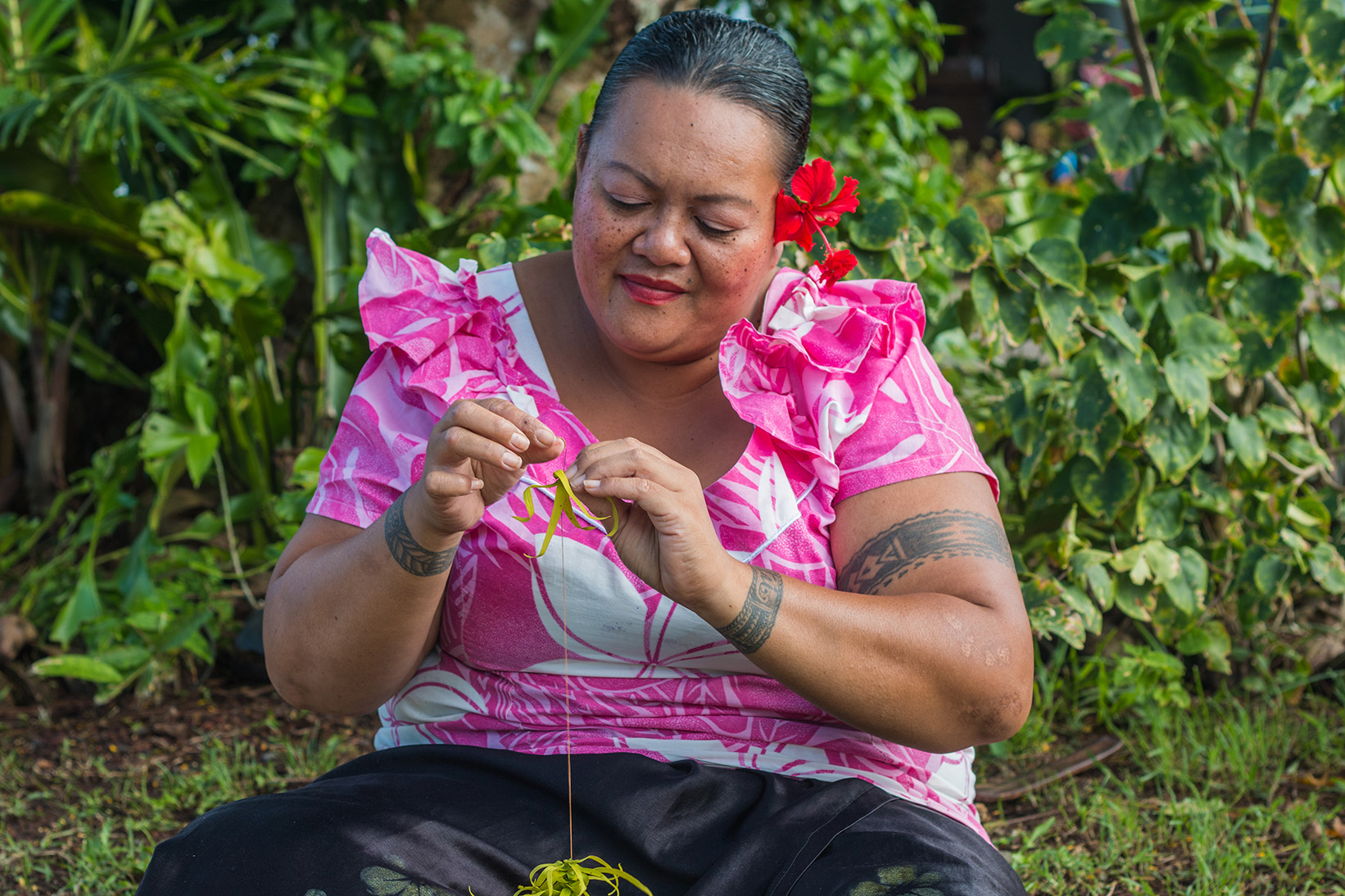
Samoan adornments used over the last 200 years, including ‘ula, continue to have an important place in Samoan society today. ‘Ula are resonant with meaning and cultural currency. During social occasions, certain ‘ula have the ability to indicate status and position. For instance, ‘ulafala made from pandanus is worn during oratory performances by tulafale (orator chiefs) and are sometimes the focus of stories.
Some materials, by their very nature, also denote rank and status such as whales teeth which are used to create meticulous ‘ula lei that adorned the necks and bodies of matai (chiefs), manaia (chief’s sons) and taupou (ceremonial village maidens). These prestigous ‘ula trace social connections that extend further abroad to the islands of Fiji and Samoa where materials, such as sea mammal ivory, were traded and brought.
‘Ula are a culturally significant adornment that can highlight relationships through exchange and gifting at celebratory events, where they are offered as a sign of alofa and respect. ‘Ula can be simply threaded together from fresh leaves, scented flowers, seeds and shells. More recently, and particularly in urban contexts, plastic flowers, ribbons, lole (lollies) and money are used to create new forms of ‘ula that are gifted at graduations and celebratory events.
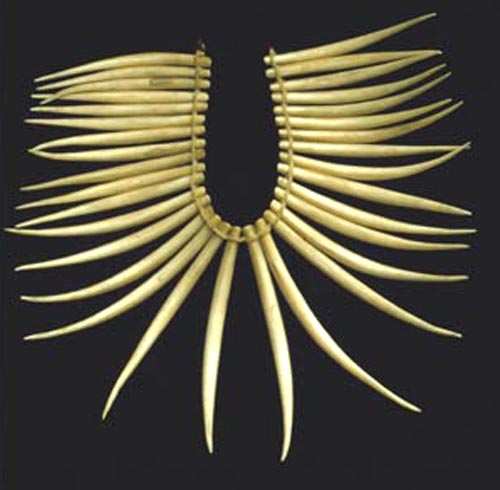
Ula Nifo. Maker unknown. Samoa. Date Unknown. Auckland Museum Tamaki Paenga Hira (1994.83)
ULA NIFO
In Samoa, mana is embodied in adornments like ‘ula nifo that are made and worn to communicate the rank of an individual. Rare and valued, perhaps because of the difficulty in acquiring whales teeth there are protocols pertaining as to who can wear ‘ula nifo and on what occasions. ‘Ula nifo were worn only by chiefs and their sons and daughters and, to some extent, represented an individual’s wealth or influence.
‘Ula nifo are made from a sperm whales tooth that have been split and ground down to into curved and pointed pendants. Many originated from Fiji - they were made for Fijian chiefs by Tongan and Samoan canoe builders and later their descendants who began settling in Fiji in the late 1700s. While they are similar to the Fijian Wasekaseka, ‘ula gifo are half the length and cut much thinner than those of Fiji.
Fast forward to today, ‘ula nifo are replicated in plastic shaped bone pieces and can be seen around the necks of those performing the fa'ataupati (slap dance) or on other special occasions.
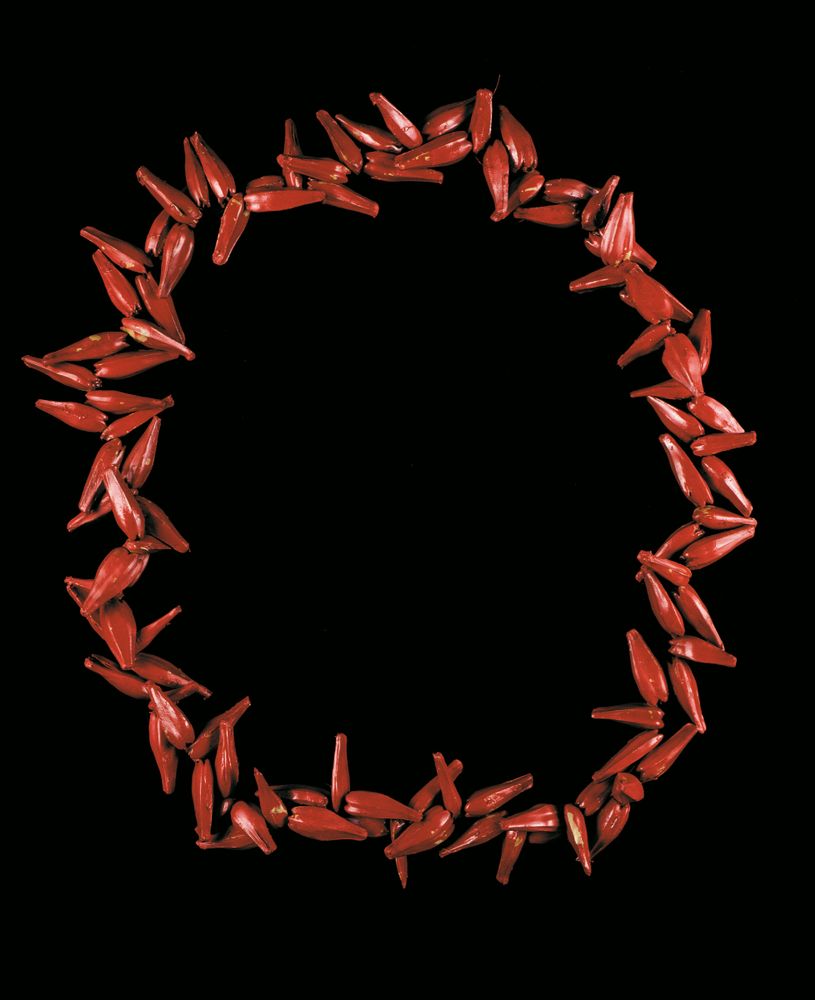
'Ula fala (pandanus key necklace) maker unknown; 20th Century; Samoa Islands Pandanus Key. Te Papa. Gift of Government House 1997.
ORATORY LEI
Adornment in Samoa can often be prescribed to specific people. Lauga (oratory) in Samoa is the strongest and most prestigious of the language arts and the tulafale is adorned to reflect this. Emblems of a tulafale’s station include the fue which he will use to make several movements before commencing his speech and an ‘ula fala around his neck.
‘Ula fala are made from the keys of pandanus fruit, which range in colour from yellow through to orange and red when ripe. ‘Ula fala are worn during oratory performances as markers of their social status. This 'ula fala has been painted bright red – a colour associated with high rank – making it difficult to miss at any ceremony or event.
‘Ula fala can also be worn in other social or ceremonial situations to help identify a special guest or simply act as an attractive adornment.
.
Photographs of Olivia Fano & Ita To'oala: Penina Momoiseā
-
COOK ISLANDS
ARTIST PROFILE: MARY AMA
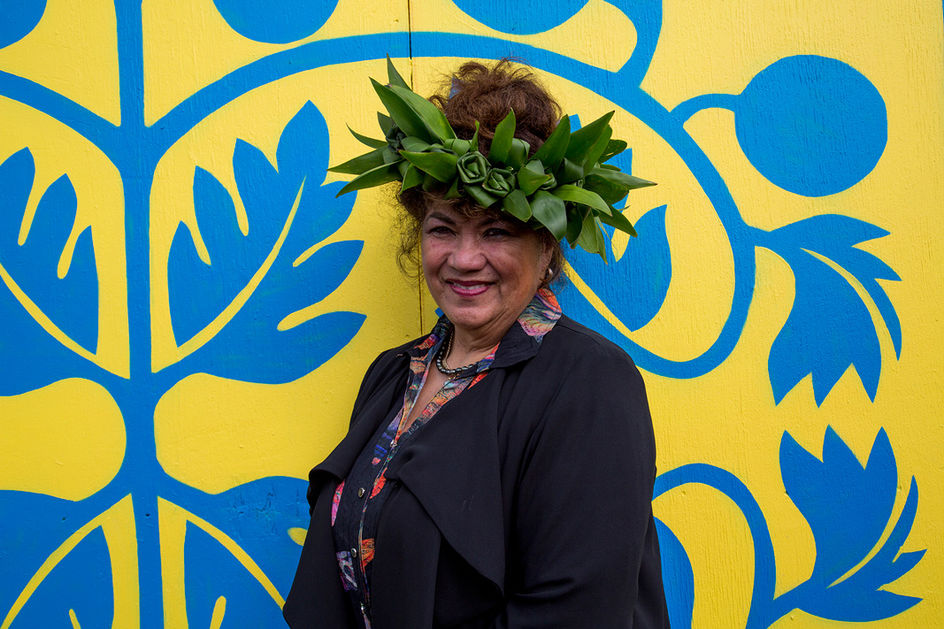
"I cannot go to a function without an ‘ei. I actually feel that I’m not dressed, it’s almost like I forgot my lipstick or my eyeliner. Having that ‘ei, it’s just that finishing touch, it gives you that look.
Sometimes it helps people to identify who you are, because the type of ‘ei you wear could say where you are from. I think basically it brings a lot of spark and happiness, it adds that love and makes connections to people. Part of our culture is sharing our love with others and making that connection. What better thing to do than make the ‘ei and give one to somebody? And we don’t only make ‘ei just for ourselves, we make them to give to people at the airport, or when we go to any celebration. It’s a beautiful activity."
Mary Tupai Ama, who is affectionately known as Mama Mary, is a Pacific artist, educator, cultural and community leader. She founded the Pacifica Mamas, a community arts collective that deliver arts and cultural programmes from Corban Estate in West Auckland.
She developed the ‘Pacifica Experience’ programme which teaches and preserves cultural weaving practices and has delivered this as a youth programme over the last 20 years. Since 2015, she developed and delivered the ‘Polynesian Creations’ programme to Springhill Prison. She has delivered Pacific arts, culture and community projects for Te Papa, Auckland War Memorial Museum and Auckland Art Gallery amongst a few.
For her commitment and dedication, she was made an Officer of the New Zealand Order of Merit in 2017.
COOK ISLANDS EI's
A diverse range of personal adornments are made in the Cook Islands, one of the most iconic Cook Island forms of adornment are ‘ei (necklace) and ‘ei katu (head wreath). Both forms can be made with fresh flowers and fragrant grasses as part of everyday dress to enhances appearance or natural scents of the wearer. They are also worn as an extension of story-telling during Cook Island traditional dances such as ura which is performed by women who use their bodies to tell a story.
Cook Island communities have made ‘ei kaki and 'ei katu for generations to mark special occasions, signal people of importance and adorn treasured objects. They are gifted as symbols of friendship, love and respect.
There are various ways to make ‘ei katu like sewing, plaiting, wrapping or threading (verovero) – each has varying levels of difficulty. Mary Ama showcases her deft handiwork to create her specialty article, ‘ei rauti, that is, a head wreath made from the fresh stems of rautai or cordyline. She uses a combination of plaiting and wrapping to create this stunning ’ei katu.
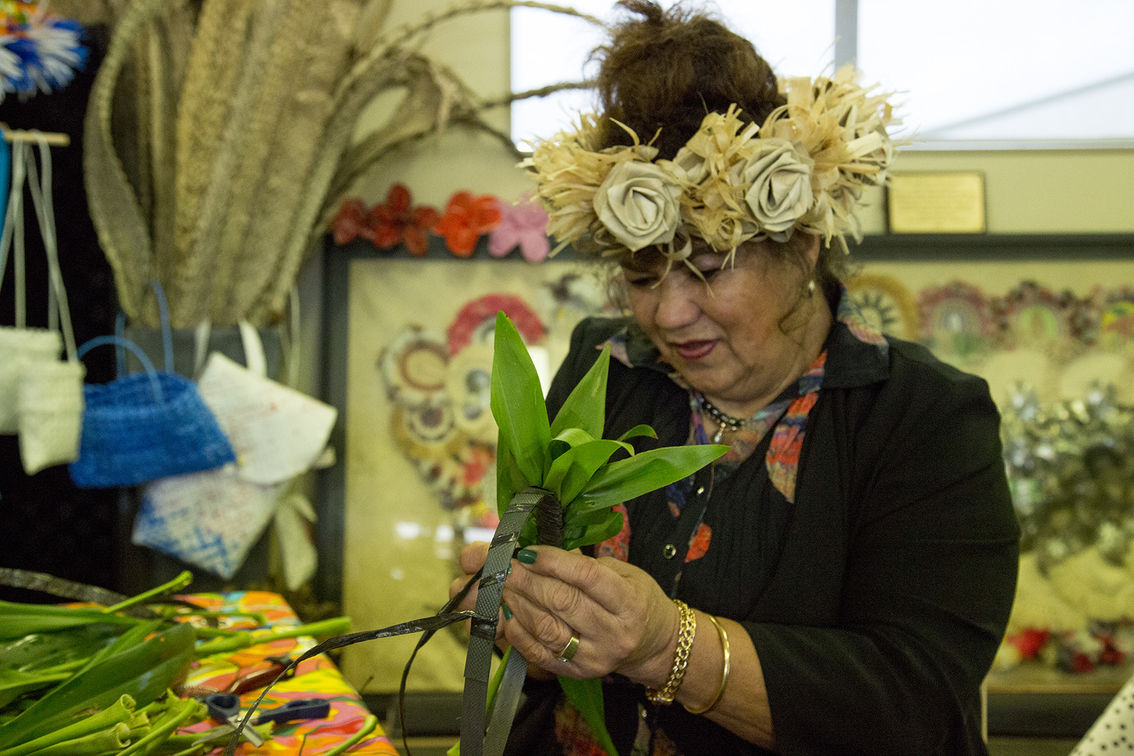
The Cook Islands is comprised of 15 islands; six in the Northern group and nine in the Southern group. Historically personal adornment varied across the archipelago including ear ornaments known as poe taringa which were worn by men and women. This practice was reflected in the ornamentation of wooden god staffs whose ears featured suspended feather ornaments. Another form of adornment were unique conical masks made from tapa cloth called pare’eva worn at ‘eva, a celebration commemorating ancient gods and local brave men.
Today, one of the most iconic Cook Island forms of adornment are ‘ei (necklace) and ‘ei katu (head wreath). Both forms can be made with fresh flowers and fragrant grasses. It is also common for ‘ei and ‘ei katu to be made from synthetic flowers and plants making it possible for them to be worn multiple times. They are worn on many occasions including graduations, birthdays and receptions.
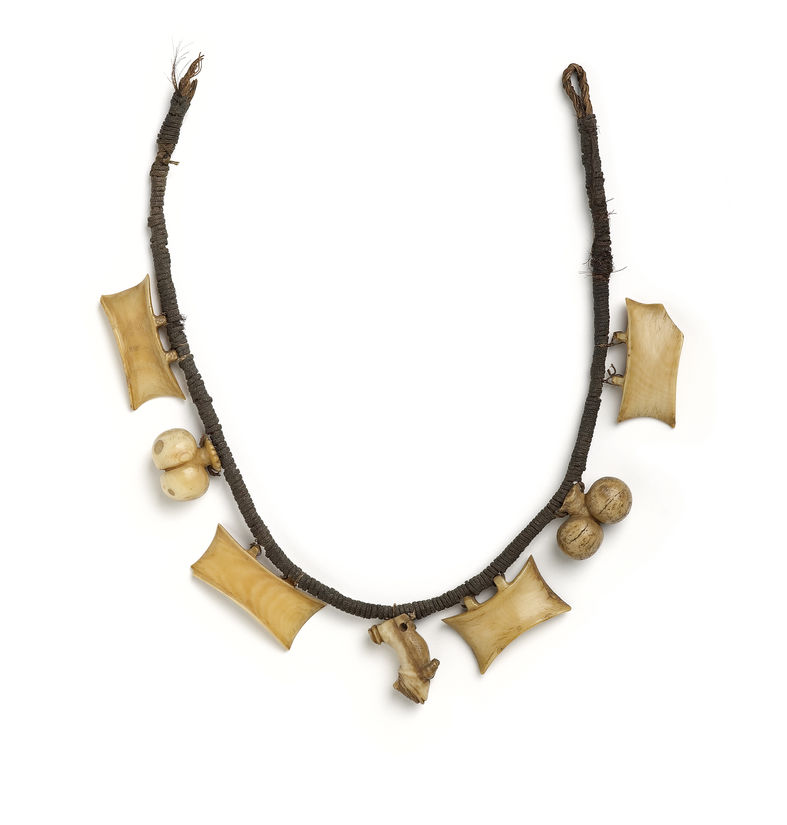 Rei (necklace), 1800s, Cook Islands, maker unknown. Oldman Collection. Gift of the New Zealand Government, 1992. CC BY-NC-ND 4.0 Te Papa (OL000479)
Rei (necklace), 1800s, Cook Islands, maker unknown. Oldman Collection. Gift of the New Zealand Government, 1992. CC BY-NC-ND 4.0 Te Papa (OL000479)REI
In the Cook Islands, scented leaves and flowers were worn by both men and women and across all classes but ornaments, like this rei, were worn exclusively by people of high status. The term rei refers to ornaments made from whale ivory.
Sea mammal ivory was a material prized for personal adornment and ceremonial presentation in the Cook Islands. This rei is made up from sea mammal ivory and would only have been worn by people of high status. This rei is attributed to the chain of islands extending through the Austral group to Mangaia in the southern Cook Islands. Here it is filed and shaped into seven small bone pendants suspended from a fibre cord. The cord is constituted from plaited sennit combined with human hair, further suggesting the importance of the rei and the person wearing it.
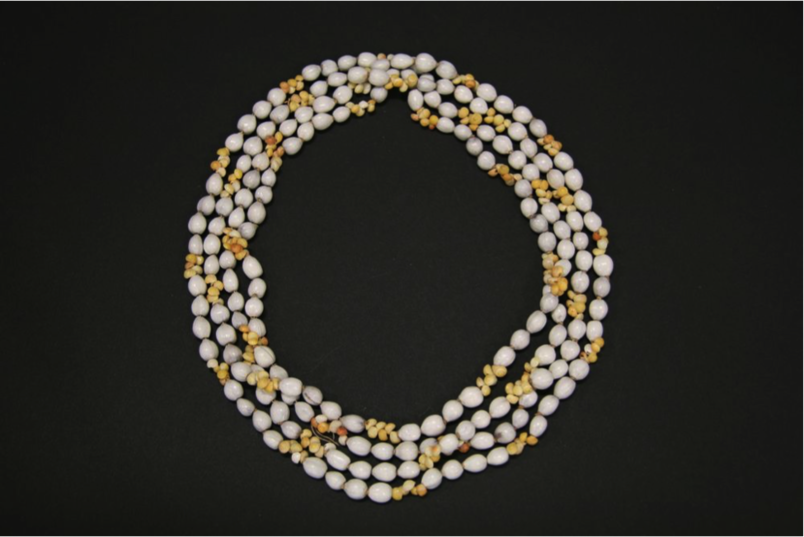
Ei (shell necklace), Cook Islands, maker unknown. Gift of Mr J D Hutchin, 1948. CC BY-NC-ND 4.0 Te Papa (FE012139)
EI
In the Cook Islands, an infinite variety of ‘ei are produced from elaborate flowers to simple leaves and shells. ‘Ei are all strung on a fibre cord and are worn around the neck,
This ‘ei is made from seeds and shells and is, perhaps, the most common item of adornment. Shells are strung onto the cord with seeds at intervals and can sometimes be looped around the neck to create layers. This ‘ei is worn by men, women and children.
‘Ei continues to be worn as a decoration during festive occasions, dance performance and are offered as gifts of welcome or farewell for family and friends.
.
Photographs of Mama Mary at the Corban Estate: Emily Mafile'o
Photographs of Mama Marys "Turou" exhibition: Adrian Mcbirney
*Long ei images by Mary Ama from the 'Turou' exhibition by the 'Pacifica Mamas' n conjuction with Tiana Epati.
-
HAWAI'I
ARTIST PROFILE: WALTER KAWIKAKA'IULANI AIPA
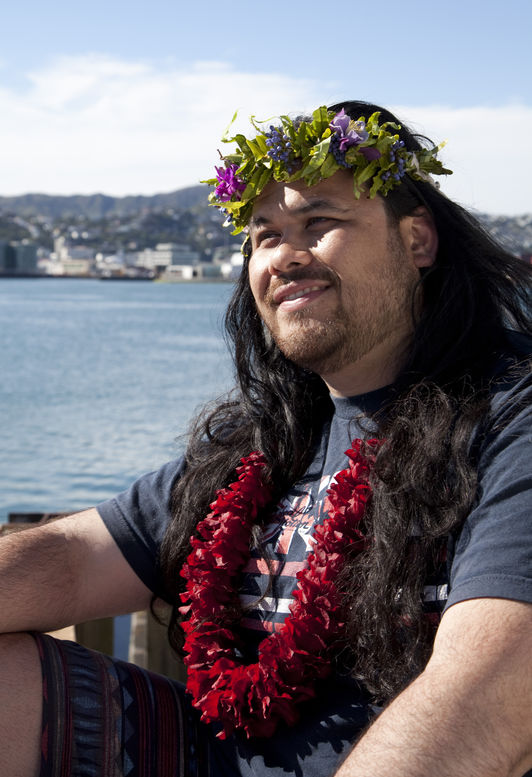
Walter Kawikaka’iulani Aipa, better known as Kawika, is a kanaka maoli lei maker and lomilomi practitioner. Originally from O’ahu, Kawika moved to Wellington in 2013 where he currently lives and works.
In 2015, he co-founded Aoteroa’s first-ever Hawai’i Culture Centre with Hawaiian academic Dr. Emalani Case and Kamalani Kealaokuuleialohapoina’ole Kapelia which aims to promote the education, culture and practice of Hawai'i while building relationships with Aotearoa and its various communities. He continues to practice lomilomi, a form of traditional Hawaiian healing and massage, as well as running lei making workshops. Often, Kawika binds the two practices which both incorporate forms of healing.
Kawika is also a member of the Kava Club Wellington, a collective of Maori and Pacific practitioners who create platforms of engagement and response which includes the well-known Chop Suey Hui speaking events.
.
In Hawaii, lei manifests as aloha (love). Lei are the very expression of Hawaiian culture, steeped in rich cultural rituals and mythology. Hawaiians have worn lei around their heads and necks from as early as 1100 A.D. Lei were made and given as offerings to powerful gods, tokens to mark a momentous occasion or event and as adornments for dancers, who adhered to strict rules when selecting flowers and plants for hula. It was also used in the healing rites of the kahuna lapa‘au (the healing priest).
Today, lei continues to be infused with these cultural histories and function as gifts to honour an important person or loved one. A person’s head is the most sacred part of the body,therefore, placing lei over the head and onto the shoulders of a person exemplifies the bestowing of aloha, honour and aloha aina (respect).
Lei is celebrated and commemorated through Lei Day, one of Hawaii’s most popular celebrations, held on May 1st every year. The first Lei Day was held in Honolulu in 1928 and stemmed from an article by poet, Don Blanding, who suggested a holiday be created around the celebration of the custom of making and wearing lei. Writer Grace Tower Warren came up with the date May first and coined the term, “May Day is Lei Day.”
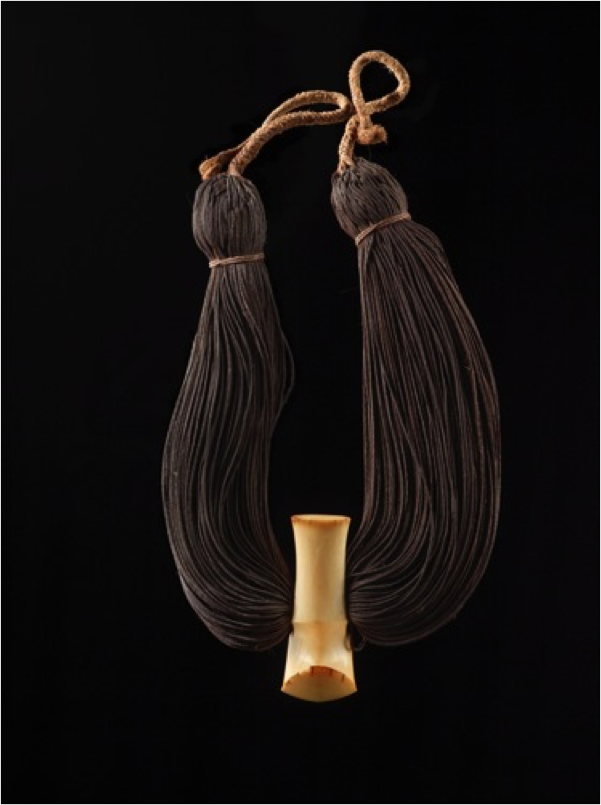
Lei Niho Palaoa (necklet), 1800s, Hawai'i, Maker unknown. Oldman Collection. Gift of the New Zealand Government, 1992. CC BY-NC-ND 4.0 Te Papa
ROYAL INSIGNIA
The mana of men and women are marked through revered neck garlands such as this lei niho palaoa which are worn only by ali’i (ruling class) or the kahuna (learned class) as a mark of noble birth and status.
Many lei niho palaoa were gifted or exchanged and are now part of collections of museums the world over. This particular lei niho palaoa is part of the Pacific Cultures Collection at the Museum of New Zealand Te Papa Tongarewa. It is carved from a sperm whale’s tooth into a hook-shaped pendant believed to represent the authority of the ali’i and appears only in lei from Hawai’i.
The mana of those who wore lei niho palaoa was enhanced through the rare and sacred nature of the materials crafted into the lei. The whale bone pendant is suspended on coils of human hair. The head and hair are considered sacred- a repository of one’s mana and knowledge but also believed to directly bind you to your ancestors. Wearing this type of lei brings the ancestors into close contact and enhances their power on its wearer and living descendants.
.
HAWAI'IAN LEI MAKING
Inherent in floral lei made in Hawaii is the concept of kino lau. Literally translating to mean ‘many bodies’, kino lau refers to the different life form of the akua (gods). It is believed that specific plants and animals are physical manifestations of an akua- who at any particular moment could be taking on that alternative form. Consequently, all undertakings of lei –from the making, gifting, receiving and wearing are anchored in cultural ritual.
Lei is always made with a particular person in mind and it should never be worn before it is presented to that person. To gather materials, the lei-maker is required to recite special prayers to the appropriate deity or, for lesser materials, a simple prayer seeking permission to collect. At least two rules of etiquette apply when giving and receiving lei. The giving of lei is a token of aloha and aloha aina. The manner of receiving lei should also display the love and appreciation for the maker- therefore it should always be received with an embrace.
There are many ways to make lei.
To make lei po’o, which is worn on the head and generally made out of plant materials only, Kawika employs a combination of the techniques. He utilises a winding and twisting technique called wili to bind the plant materials together. Haku or plaiting is done at the beginning and end of the lei making to create the tying strands.
Another way that Hawaiian lei is made is through the stringing technique called, kui. The material is pierced through the centre or side with a needle and held together by a single string.
Photographs of Walter: Ane Tonga
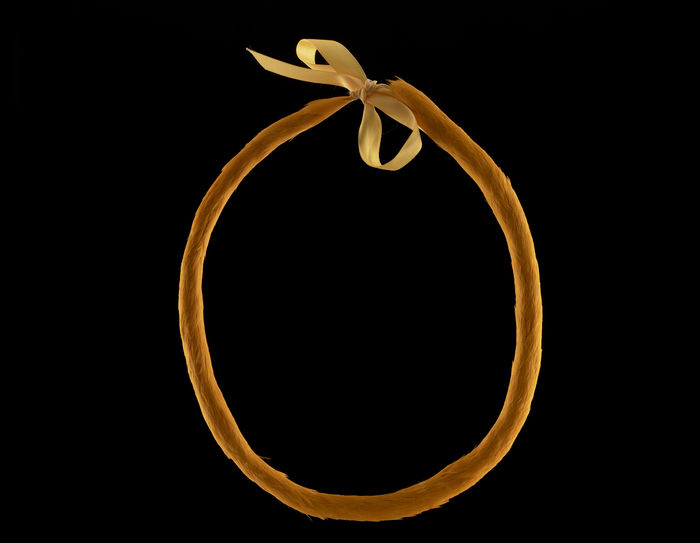
Georgenette Pudgie Azeuedo, Lei (Wilikamoe ilima), 2000; Hawaii; Te Papa (FE011532)
Featherworking is the most distinctive art form of Hawaiians. Feathers were sanctioned to create forms of dress for the ali’i including mahiole (helmets), kāhili (standards), ‘ahu‘ula (cloaks) and lei hulu manu (feather lei).
Lei hulu manu were so important that a guild of professional bird catchers was established called po’e kahai manu. Guild members studied the behavior of differerent birds and caught some with sticky substance from the fruit of the pāpala kēpau (pisonial) and others they snared or stoned. Demand of their skills was high since thousands of feathers were needed for each garment or lei.
The rarest feather colour in Hawai’i was yellow and it became a symbol of royalty. Yellow feathers came from two beautiful forest birds, the ‘o’o and mamo. Both were predominantly black with small tufts of yellow feathers around the wings and tail. These birds were caught and only two feathers were removed from the bird before they were let go. For this reason, lei hulu manu made from a single colour are considered more valuable.
These ornamental lei were worn atop the head, around the neck, or hung untied down from the shoulders. They are still passed down through Hawaiian families as treasured heirlooms.
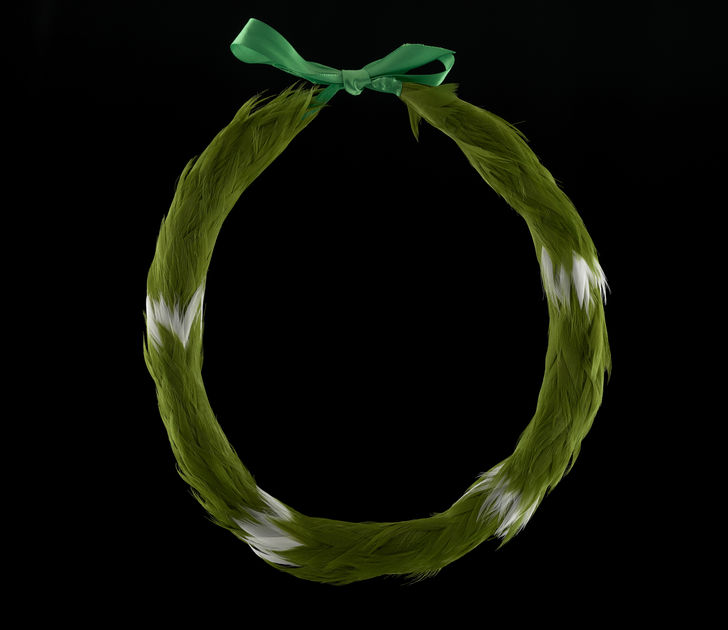
Mary Kaleonahenahe Kekuewa, Lei (Wilikamoe koena), 2000; Hawaii; Te Papa (FE011536)
-
FIJI
Tarisi Vunidilo
Secretary General at Pacific Islands Museum Association (PIMA) with the Salusalu & Tefui making workshop class at MIT
"Our Fijian salusalu is unique as when you see one, you will know straight away that it is Fijian because of the use of vau and the arrangement of flowers on top. Other Pacific islands such as Hawaii, their garland is more finer and detailed whereby for Fiji in this case, we use the vau as the base, and the flowers are woven above it. The flower arrangement and the way it is woven leaves a signature mark of our Fijian mothers on our Fijian salusalu."
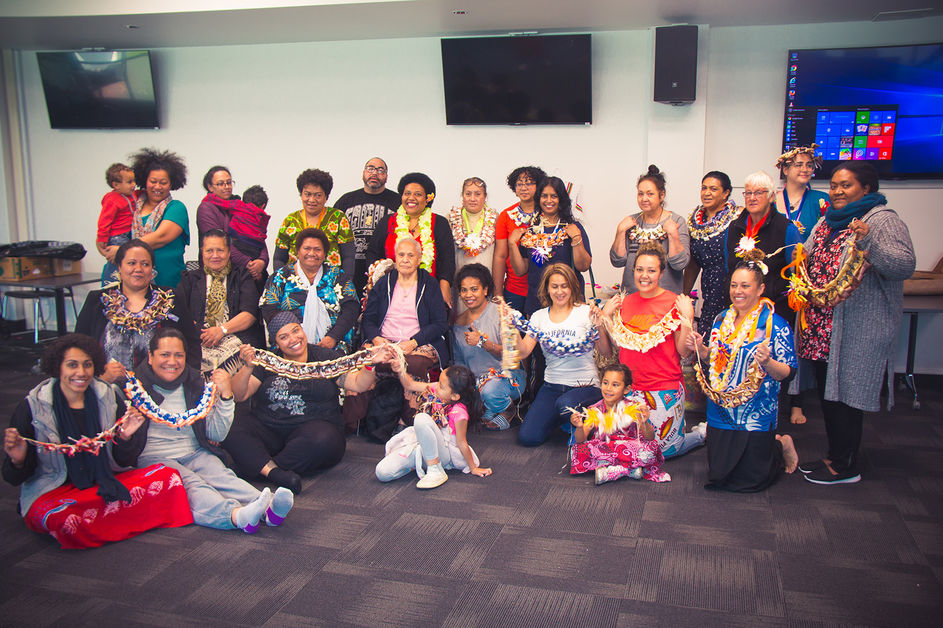
In Fiji, manifestations of mana, histories and loloma (love) are evoked through neck adornments known as salusalu, batinivuaka and tabua. Traditionally, Fiji is known to have created some of the most intricate and lethal weaponry wielded by the fierce bati (warriors). In addition to weaponry, bati also armed themselves through adornments made from boar tusks and whale ivory that were believed to be sources of strength, aggression and sometimes worn as protective armour.
Incarnations of garlands in Fiji was wide-ranging, from those made for battle to opulent neck garlands that are used to welcome visitors, gifted as loloma and passed through through families as heirlooms. This is certainly true of salusalu which are made from an array of flowers distinct to each village and, unlike any other Pacific Island culture, incorporates masi (Fijian tapa) through fascinating techniques and forms.
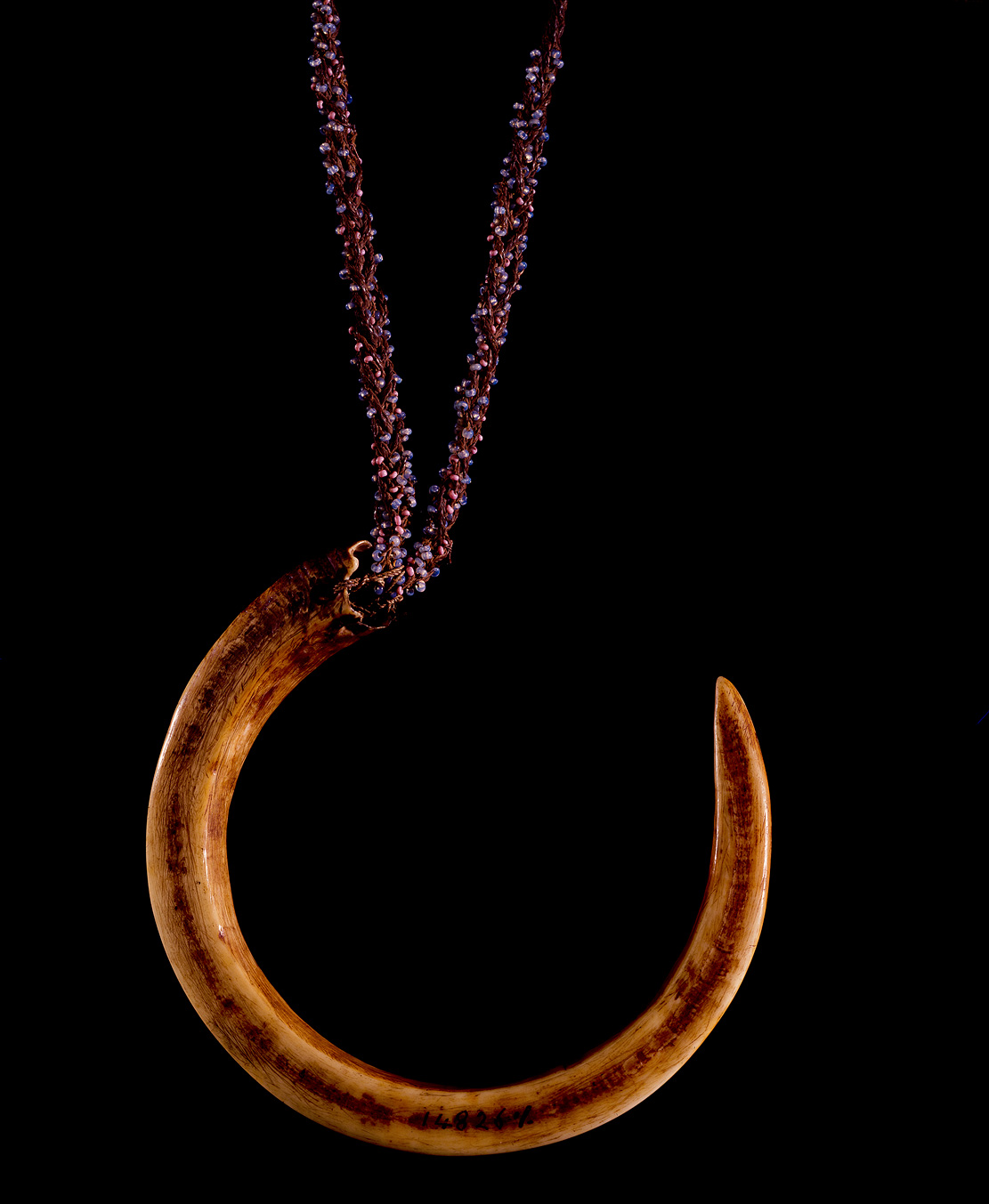 Chest ornament of boar tusk, Fiji. Auckland War Memorial Museum Tamaki Paenga Hira. 14826.1
Chest ornament of boar tusk, Fiji. Auckland War Memorial Museum Tamaki Paenga Hira. 14826.1BATINIVUAKA, PIG TUSK NECK PENDANT
In Fiji, boar tusks are a fundamental part of ceremonial dance and war attire. Boar tusks carry associations of fierceness and aggression seen in wild male pigs, making it a desirable adornment piece for the elite bati (male warriors).
This boar tusk pendant is worn tightly at the base of the neck. In the late 1700s and early 1800s, they served as symbols of chiefly status and were worn only by those of recognized rank. This would be in keeping with the rest of the Pacific, where pigs are high value items and simply donning a boar tusk indicated one’s wealth, strength and influence.
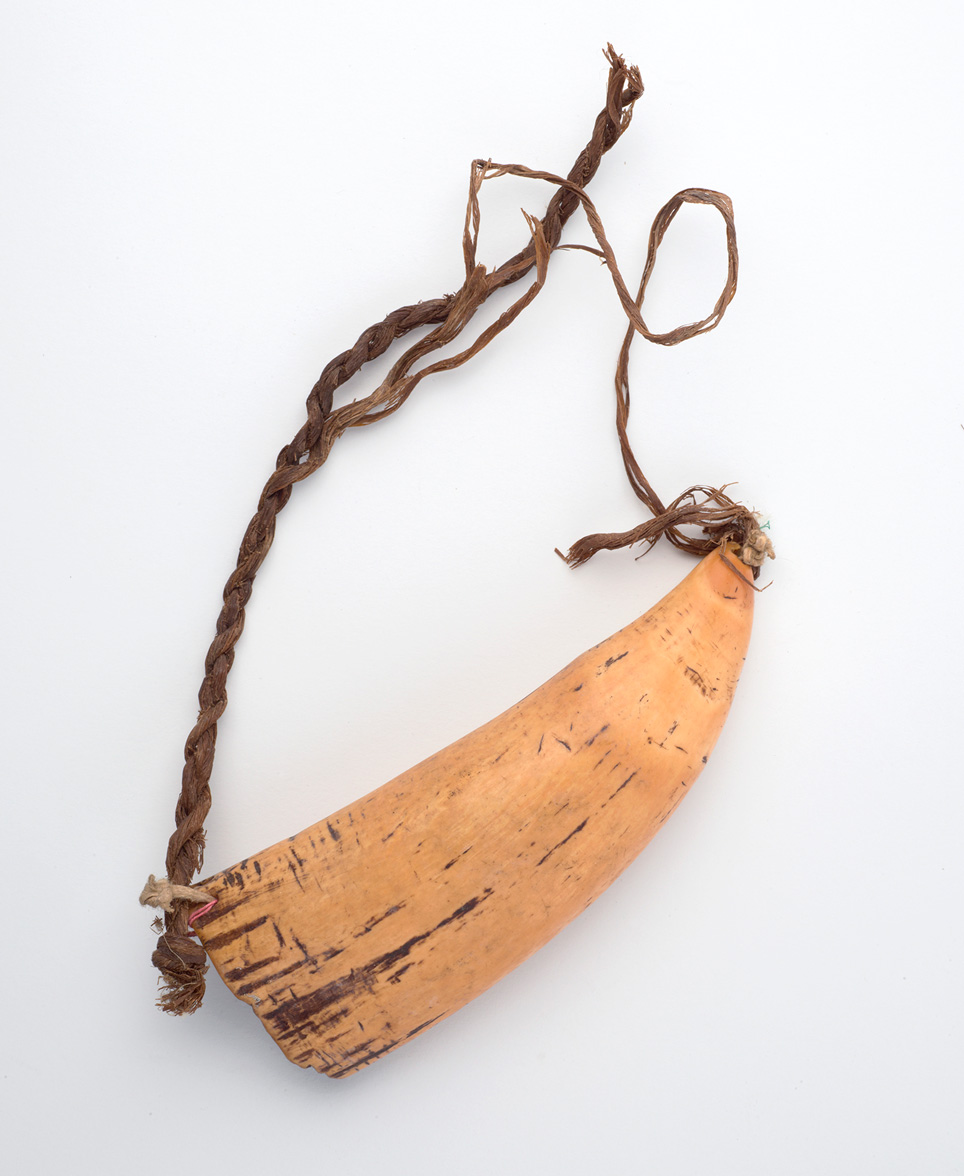 Tabua (Ceremonial whale tooth), 1800s, Fiji, Maker Unknown. CC BY-NC-ND 4.0 Te Papa
Tabua (Ceremonial whale tooth), 1800s, Fiji, Maker Unknown. CC BY-NC-ND 4.0 Te Papa TABUA
Tabua are considered by Fijians as a kavakaturanga or ‘chiefly thing’. They are not only worn but are presented at important ceremonies, including weddings, births and funerals as a sign of loloma. The occasion where tabua are presented also determines their spiritual value. Tabua was used to give weight to an apology, in the same way the presentation of ‘ie tōga strengthens atonement in Samoan society.
Tabua are whales teeth originally taken from the lower jaw of sperm whales found stranded on Fijian beaches. To attain the rich colour, some tabua are smoked in a small tent-like structure. Whale strandings were quite rare and as a result increased the value of whale teeth. Tabua continue to be passed down through families as heirlooms.
SALUSALU
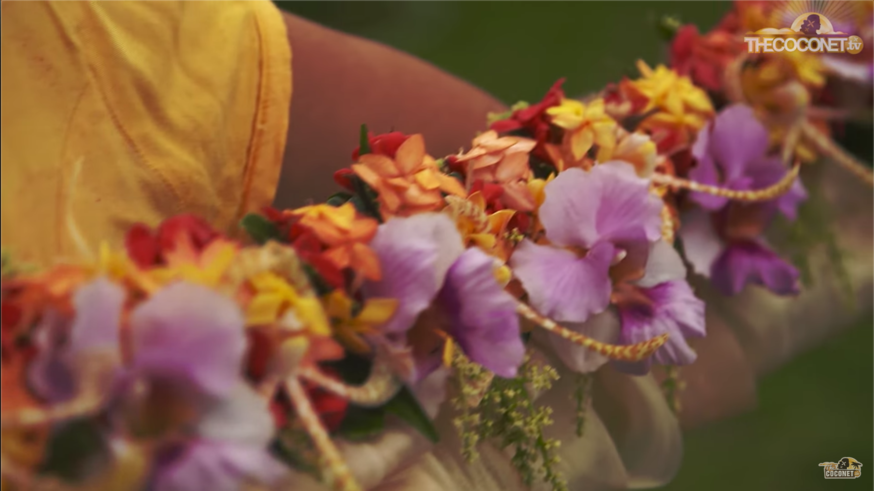
Unique to Fiji are highly decorative floral necklaces called salusalu. Na coricori ni salusalu, the threading of fresh flower garlands, is done predominantly by women. The bark of wild hibiscus called vau forms the base layer of salusalu while the others are crafted into decorative elements like mini coloured rosettes. An assortment of fresh flowers are picked and woven in between the base and the rosettes.
Different salusalu represent different regions of Fiji because of the use of vau and the arrangement of flowers woven on top. For instance, in the island of Kadavu salusalu are made with a fragrant flower called, vono. These lush adornments add colour to the costume and the performance during meke (dances). Salusalu are also worn on special occasions like weddings, worn on a graduation and prize giving day.
Photographs of Lei making: Penina Momoiseā
-
ROTUMA
Artist Profile: Mrs Faga Mosese
"This is traditional for us and has been going for a very long time. Prior to the missionaries, we had the whales tooth as our garland, worn for chiefs and people with ranking. I’m not sure what year this tefui came in, but it’s unique to us as Rotumans, and this is basically material that has been used with fragrance in the island.
We’re just using this material (ribbon, paper, wool, plastic) because we don’t have the natural material here, but if its back in the islands, what you’re looking at is totally different; it’s just a practical version for us to use here and improvise on the materials that we should have had back in the islands.
We have things like frangipani, moso'oi to create a great fragrance when you are wearing it. It’s quite ceremonial in terms of our traditions that we use them, and also for celebrations, graduations and birthdays. If we use this in our traditional dance, the women only wear one and the men wear a full string of tefui."
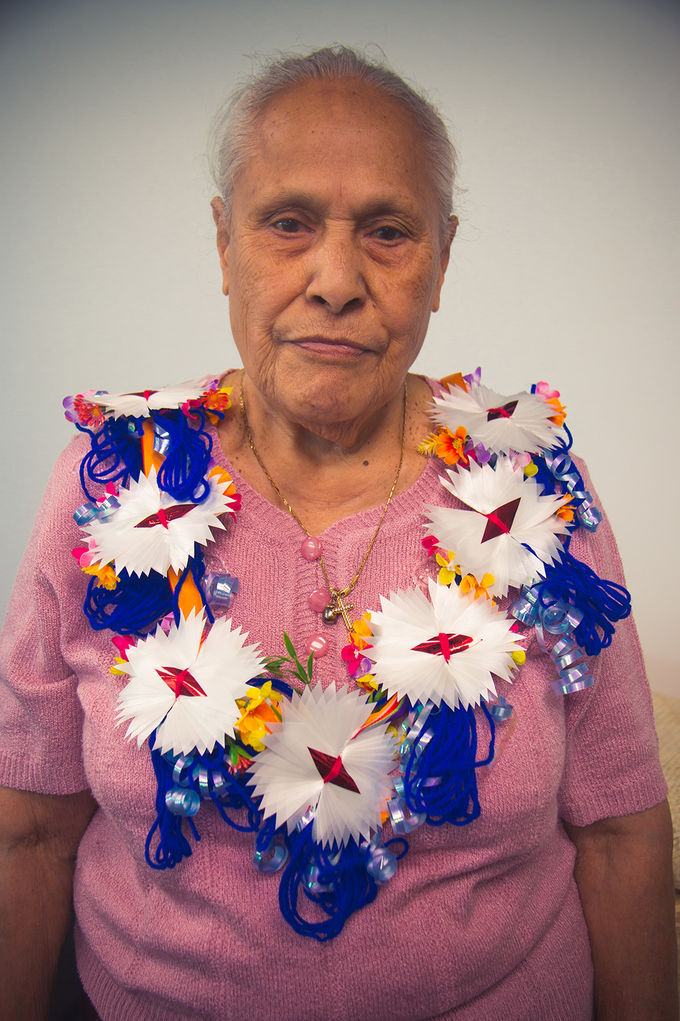
Distinct to Rotuma are the most exquisite neck garlands called tefui. Made for a variety of occasions, tefui are worn during kato’aga (traditional ceremonies), performing tautoga (traditional dances) and special occasions such as weddings and birthdays.
Tefui are comprised of individual ‘fui’ which are spathes of the paufu (male plant of the pandanus) arranged into star-shaped clusters. Between five to seven fui are strung together and are supplemented by sweet-scented flowers such as the perfumed moskoi and coconut oil. During tautoga, women wear a tefui comprising of only one fui while the men wear a full tefui made up of five or seven fui.
Auckland-based Rotuman artist Faga Mosese has cleverly substituted traditional materials for readily available synthetic materials such as plastic ribbon, cotton and flowers to recreate this lavish tefui.
Photography: Penina Momoiseā
-
KIRIBATI
ARTIST PROFILE: MARTHA TEKKY
"In Kiribati we call them Te Bau, there are many different kinds but for this exhibition I've made the most unique one; we call it ‘Itera’.
They have been apart of our culture since way back. These kinds of adornments have been passed on from generation to generation.
You can only wear them in a specific/certain way - worn around the head as a crown and a different one for around the neck. Mostly we wear them on our heads."
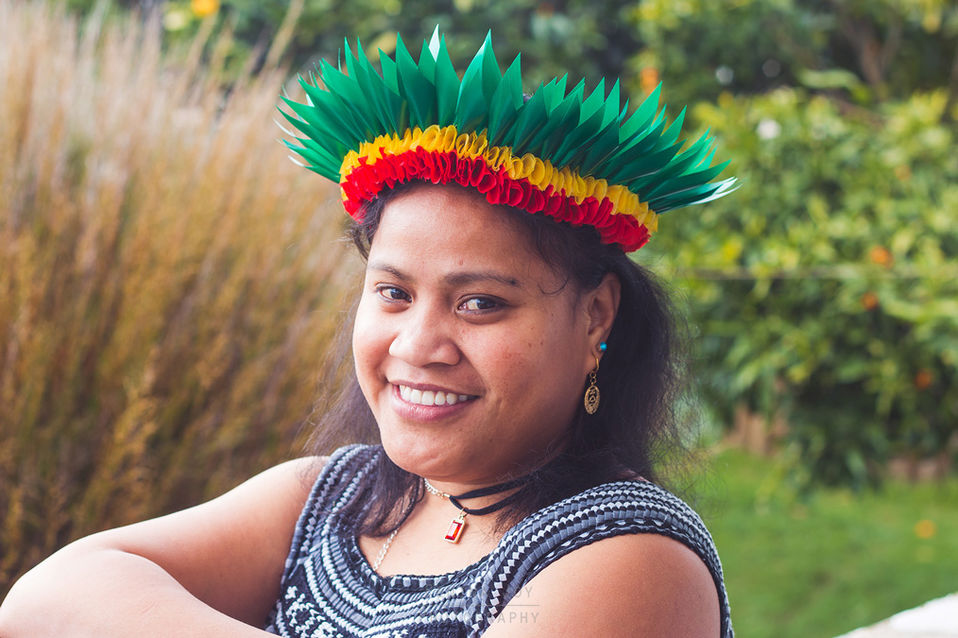
Martha Tekky is an I-Kiribati weaver based in Auckland. The skill of Te bibiri (weaving) was passed down to Martha by her mother when she was 10 years old. Although she has weaved all her life, Martha says that after a period of inactivity that she picked up the craft again, “when I moved to Wellington, at around the age of 20. Weaving was my connection to home so I picked it back up again so that I don’t forget.” She continues to teach and make itera for special events and celebrations.
.
In Kiribati, the physical environment has had a massive influence over their art forms. Formed largely by atoll islands, Kiribati is comparatively poor in raw materials but rich in song and dance which are two of its greatest art forms. Consequently, much attention is given to dance costume and ornamentation from te itera (head wreaths) to elegant necklaces, finger ornaments, treasured sashes and belts made from shell and human hair.
I-Kiribati perceive gifting itera as a fundamental aspect of their culture as it is meant to honour visitors and greet special people on particular occasions. It is a way to show appreciation, gratefulness and gratitude to people. This traditional practice plays an integral role in the lives of the I-Kiribati and it is highly considered in te mwaneaba (the traditional meeting house) before any formal events take place.
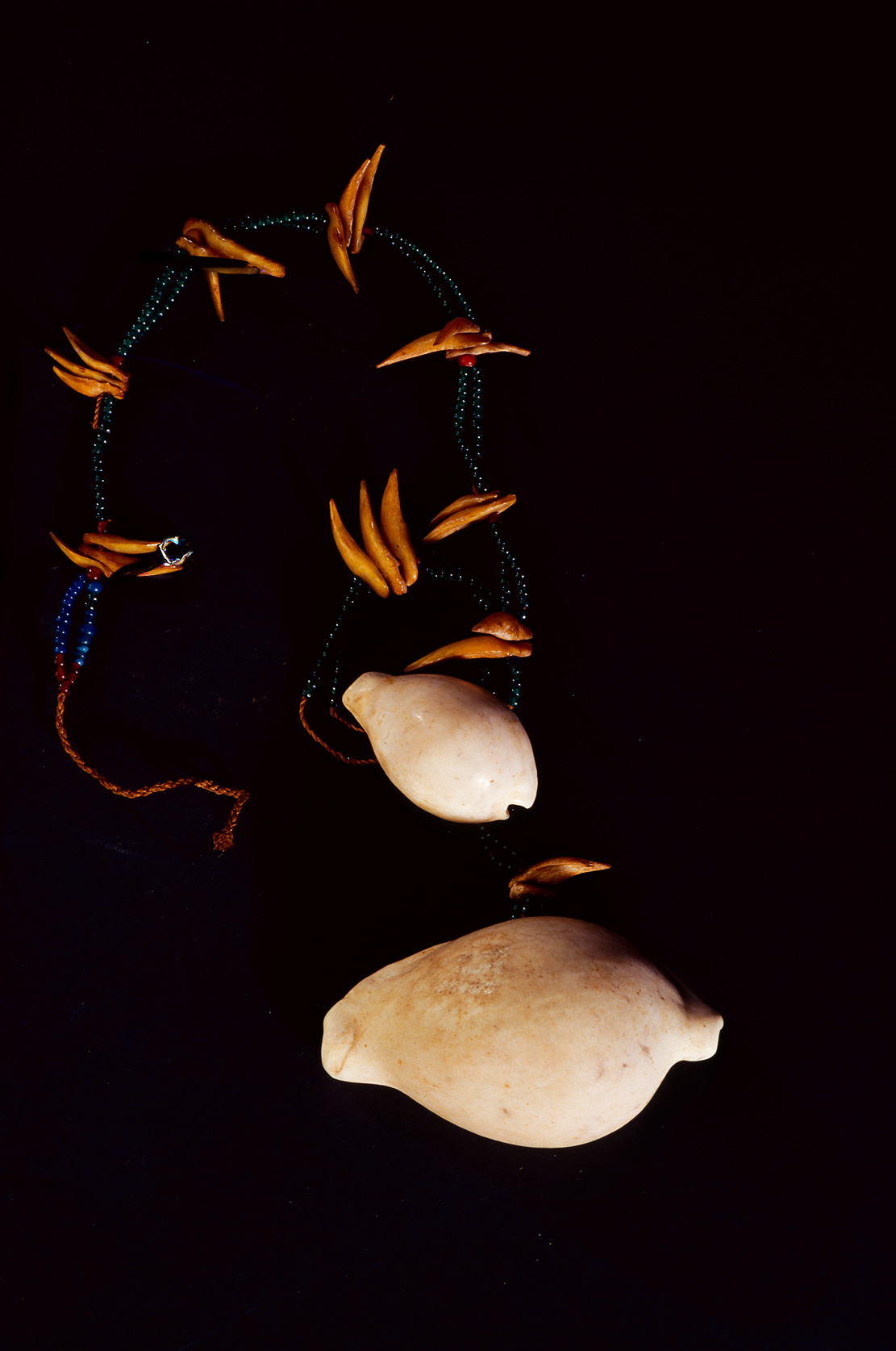 Te mai ae Kinkingaki, Kiribati. Auckland War Memorial Museum Tamaki Paenga Hira. (22945)
Te mai ae Kinkingaki, Kiribati. Auckland War Memorial Museum Tamaki Paenga Hira. (22945)TE MAE AE KINKINGAKI, NECKLACE, BERU, KIRIBATI
In Kiribati, bure (cowrie shells) were highly valued and made into alluring neck ornaments. Bure shells may also be worn individually around the upper arm as part of the dance costume when performing traditional ruoia dances.
To produce this necklace, two bure shells are strung onto an intricate cord made from fine sennit. This design is further complimented by vibrant coloured beads that have been strung onto the sennit cord. Most unique to this necklace is the use of bones from a fish head which are suspended at intervals.
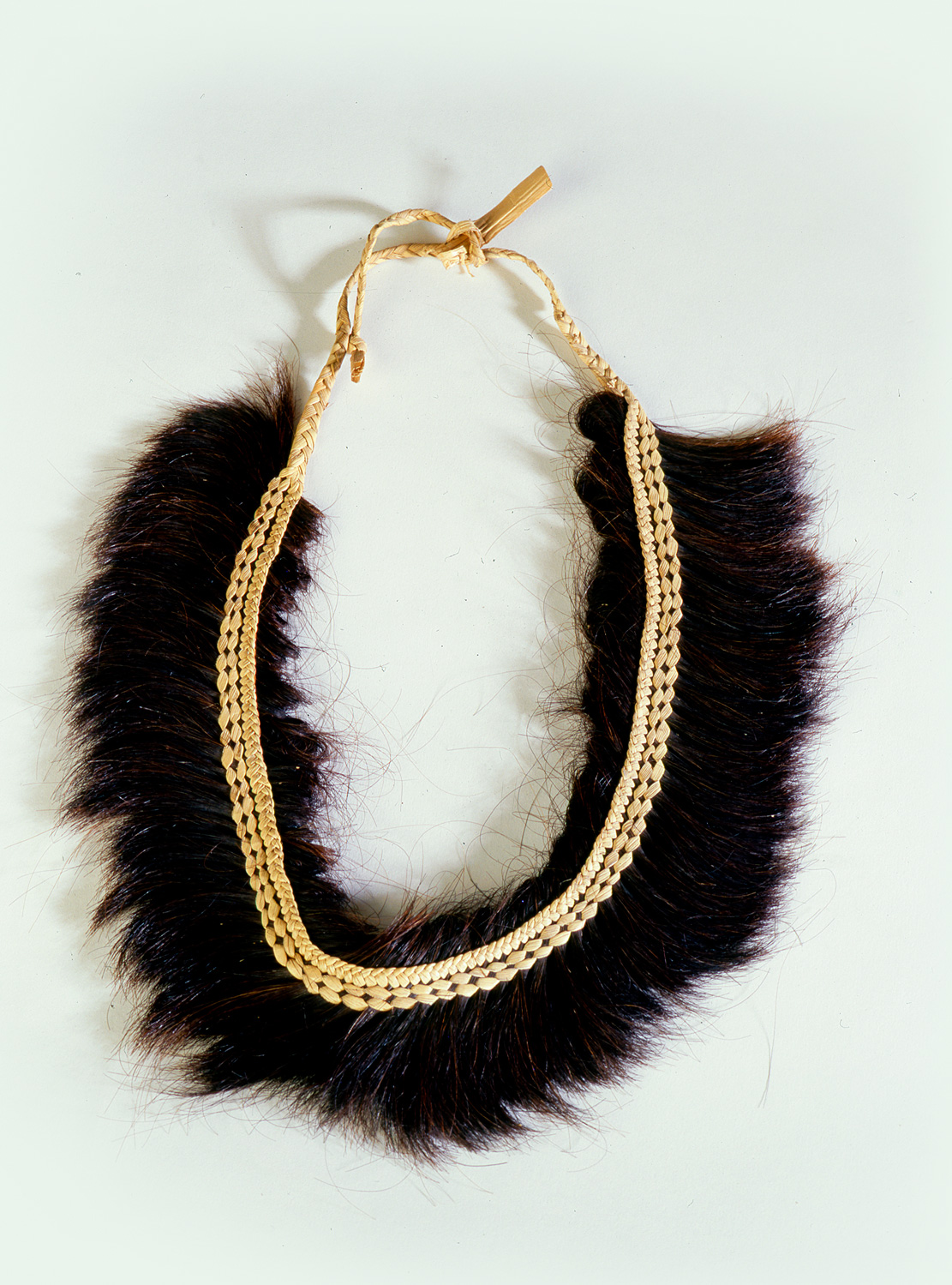 Te mai te Iranatu ae rarangaki, Kiribati. Auckland War Memorial Museum Tamaki Paenga Hira (22937.1)
Te mai te Iranatu ae rarangaki, Kiribati. Auckland War Memorial Museum Tamaki Paenga Hira (22937.1)TE MAI TE IRANATU ARE RARANGAKI, HUMAN HAIR NECKLACE, TABITEUEA, KIRIBATI
The ultimate sign of mana is represented in neck adornments that incorporate the use of human hair due to the sacred properties that hair is believed to possess. In Kiribati, hair is incorporated into a number of personal adornments including necklaces that are kept and passed down within families.
To create this most intricate necklace, bundles of hair that are roughly equal in length are gathered. The hair is folded in half and bound together with plaited pandanus leaves. The hair is bound at the fold, with the ends of the hair creating a type of fringing.
This type of necklace is still made and gifted as family heirlooms which allow its wearers to retain connection with individuals and family members.
KIRIBATI ITERA MAKING:
Head wreaths, are made in Kiribati often as part of song and dance performances which are two of its greatest art forms. Performance such as traditional ruoia dances have continued significance and are considered bai n abara, meaning a thing of the land, a marker of cultural identity passed down by bakatibu (ancestors).
Like many Pacific communities living in diaspora, I-Kiribati women have adapted to materials available in their new surroundings to continue creating adornments worn as part of special performances, milestone events or to acknowledge a special guest. Talented i-Kiribati artist demonstrates the arduous form of plaiing called te bibiri to create an exquisite itera made from unconventional materials including plastic raffia, synthetic lei petals and ribbon.
Photographs of Martha: Penina Momoiseā
-
KAHOA/ULA LOLE
ARTIST PROFILE: MELE TUIPULOTU
"I think it’s a show of happiness in my opinion. I would make these for special occasions like graduation, Mother’s day, Father’s day, weddings, birthdays, any special and happy occasion.
We've made them out of Picnic & Crunchie bars - Chocolate, lollies and ribbon. Sometimes we use money, or traditionally pandanus or flowers in the islands. If I were to make these in the islands, I wouldn’t use ribbon, I’d probably use flowers to stick on here and long stringy leaves between them. In New Zealand we mostly use the ribbon and the lollies and anything that is beautiful can be used to stick on the kahoa lolly.
In Tonga sometimes they use corned beef or chips. Lollies are expensive to buy so they use them to make them look expensive."
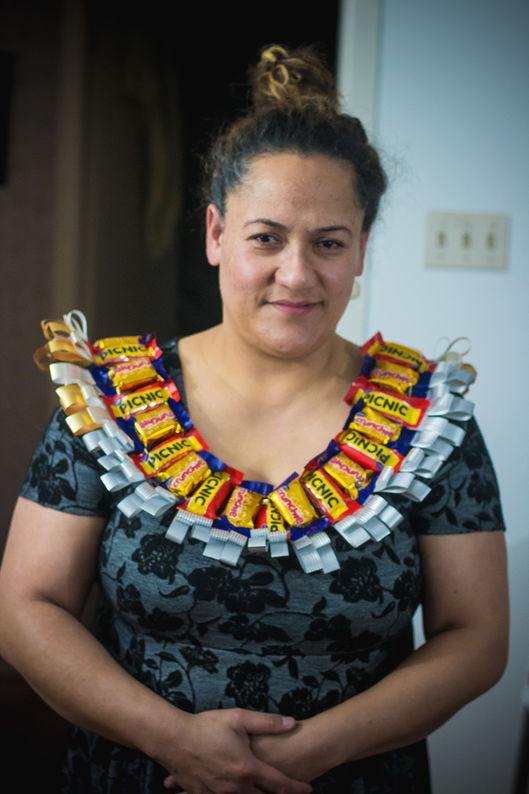
During graduation ceremonies, kahoa lole, lei lole and ‘ula lole never go amiss. Neck garlands made from a variety of sweets intricately joined together by ribbons are new expressions of ‘ofa, alofa and aloha made by people across the Pacific.
Kahoa lole can be made at home by family members for special occasions beyond graduation ceremonies and are bestowed on a wearer as a sign of love. It is not uncommon to see new graduands draped in an abundance of kahoa lole that almost covers the wearer’s face. While this may seem excessive to some, it is less about the wearer and instead becomes a show of immense pride of the wearer’s achievement by those who have bestowed the kahoa lole.
It’s also common to see creative interpretations of kahoa lole, including whole blocks of chocolate, packets of lollies and more recently prized food items such as cans of corned beef.
Kahoa Lole artists - Mele Tuipulotu & Ileini Tuipulotu
Photographer: Kahoa loles made by Mele & Ileini plus St Pauls prizegiving photos - Penina Momoiseā.
Graduation pictures from Kristina Pili & Brandon Pilis graduation
-
MONEY LEI
Where there are Polynesian communities, our traditions will surely follow. Polynesian communities in remote places as far as Alaska have contributed towards the transformation of lei as offerings to the gods or signs of mana into popular forms of graduation attire.
Graduation ceremonies are a site for innovative lei creations made from money. Rather than fresh flowers and leaves, real dollar bills are folded into the shape of flowers to create striking lei and Samoan pale (crowns). Bills are also folded and used to adorn graduation robes.
Money lei are a new kind of currency garland that is intended to congratulate and embellish the recipient. Students wearing money lei may not be of Hawaiian or Pacific ancestry- these lei can be purchased for graduation ceremonies and gifted as a sign of happiness.
The evolution of substituting fresh flowers for synthetic materials to money, which is also highly valued, raises interesting ideas about exchange and adornment. As a symbol, it adorns the body on the social occasion and later pocketed by the recipients pocket - it is essentially a gift of money.
Photo credit: Brandon Pili c/- Heather Pili & Kristina Pili graduation pics

